In 2025, Shopify continues to dominate the eCommerce landscape, powering over 4.4 million online stores worldwide. Its flexibility, ease of use, and seamless integration capabilities with other systems and robust app ecosystem make it the go-to platform for businesses of all sizes. But with 8,000+ apps available in the Shopify App Store, finding the right tools to optimize your store can be overwhelming.
Whether you’re looking to boost sales, enhance customer experience, or streamline operations, the right apps can transform your Shopify store into a powerhouse. In this guide, we’ve curated the 50 best Shopify apps of 2025 for advanced business management. These apps will not only help you manage your store more efficiently but also scale your business to new heights.
Let’s dive in and find the perfect tools to elevate your Shopify store this year!
30 best Shopify Apps in Shopify App Stores
Shopify’s app ecosystem is a game-changer for businesses looking to scale, automate, and optimize their online stores. With thousands of apps available, we’ve narrowed down the top 30 best Shopify apps of 2025, categorized to help you find exactly what your store needs. Each app includes its rating, pricing, best for, and why you should use this app to make your selection process easier.
1. Referral, Affiliate & Influencer Marketing Apps
1.1. Refersion
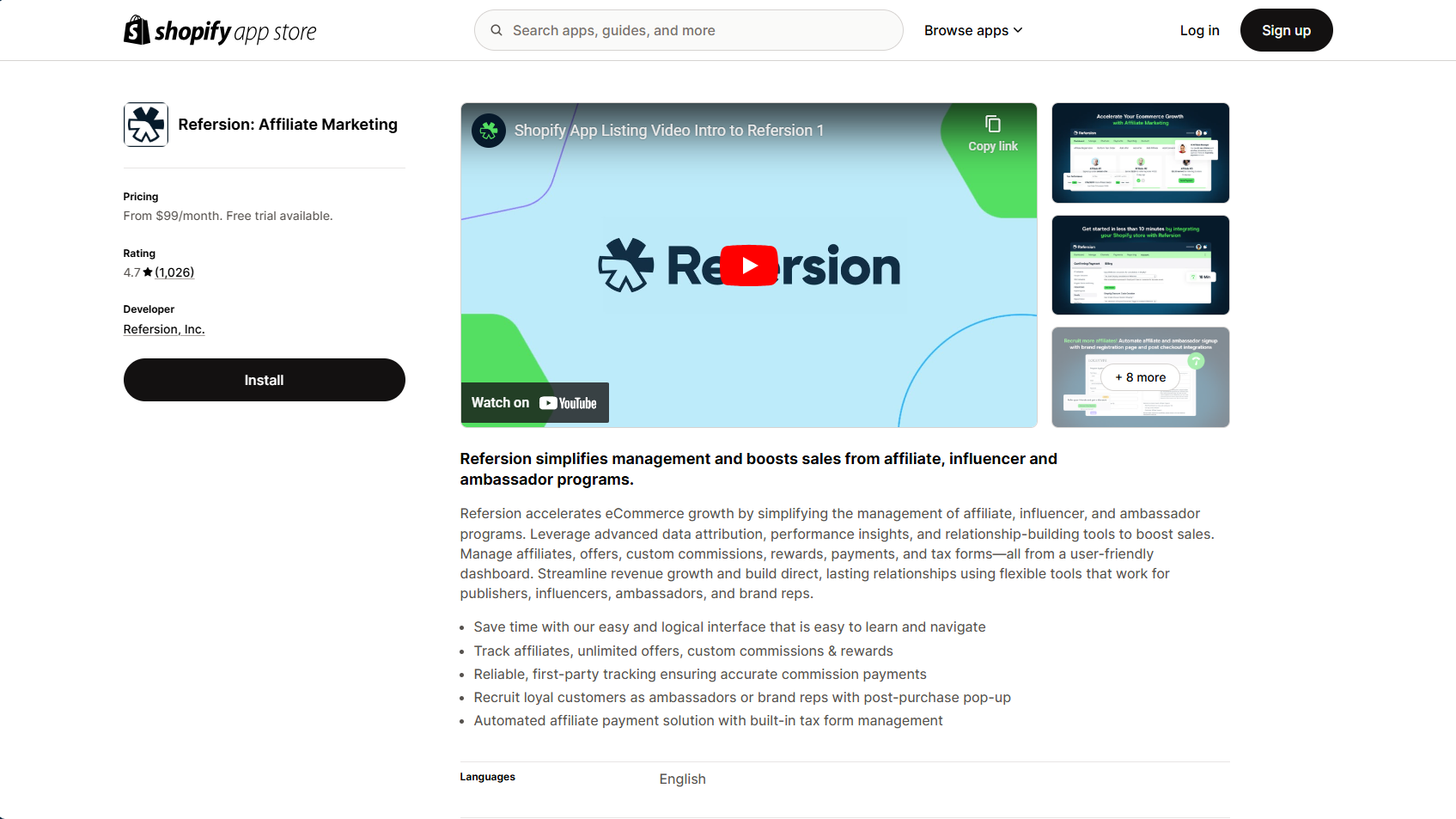
- Rating: 4.7/5
- Pricing: Starts at $99/month. Free trial available
- Best for: Managing affiliate programs and tracking influencer marketing.
- Why you should use this app: Refersion simplifies affiliate management by offering detailed tracking, automated commission payouts, and real-time analytics. It integrates seamlessly with Shopify, helping you build and manage a network of affiliates and influencers to drive traffic and boost sales without manual overhead.
1.2. UpPromote: Affiliate Marketing
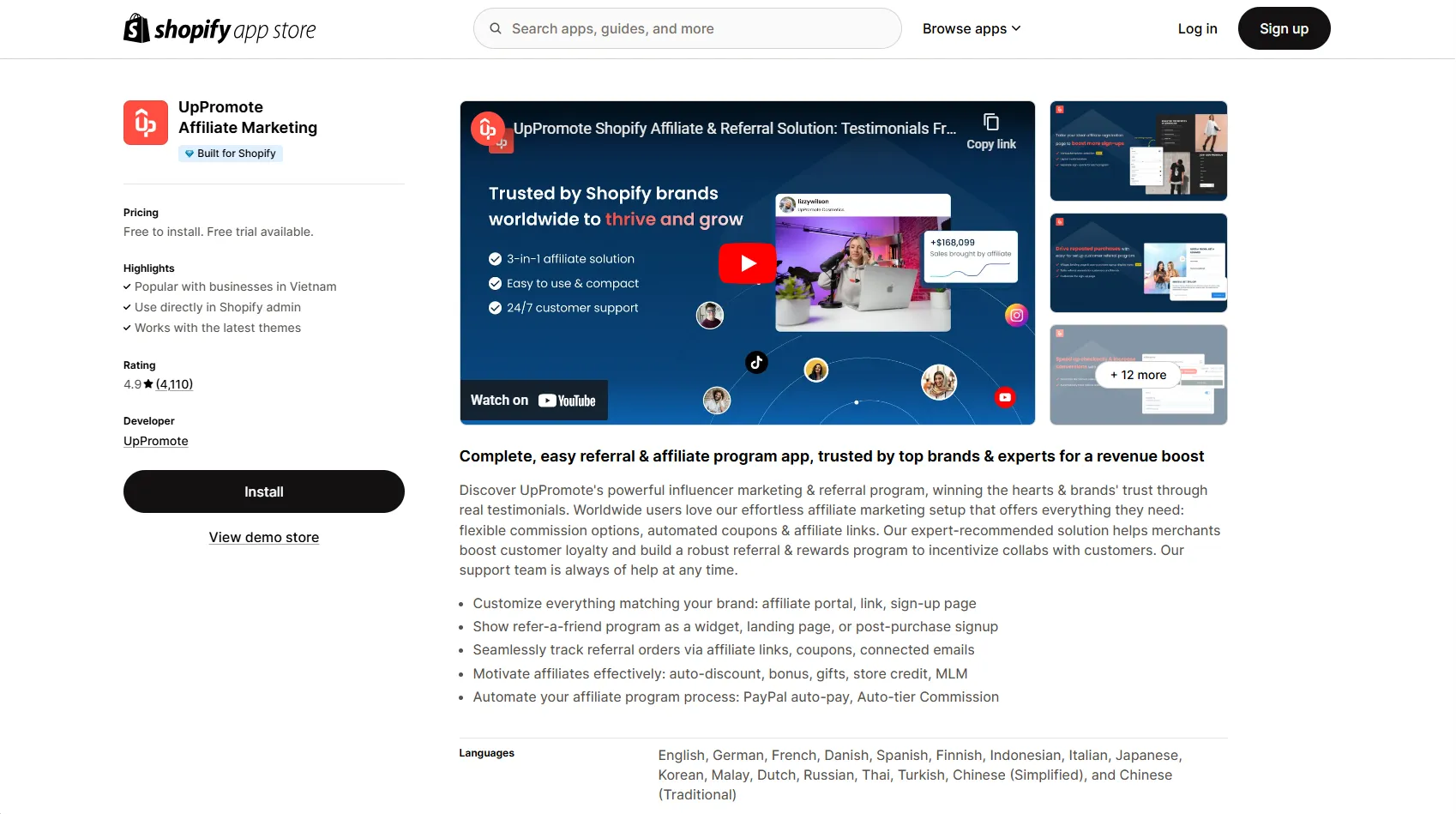
- Rating: 4.9/5
- Pricing: Free plan available; paid plans start at $21.99/month
- Best for: Small to medium-sized businesses looking to grow through referrals.
- Why you should use this app: UpPromote is an all-in-one affiliate marketing solution that helps you recruit affiliates, track their performance, and automate payouts. Its intuitive dashboard and customizable referral programs make it perfect for businesses looking to expand their reach without significant marketing costs.
1.3. Social Snowball
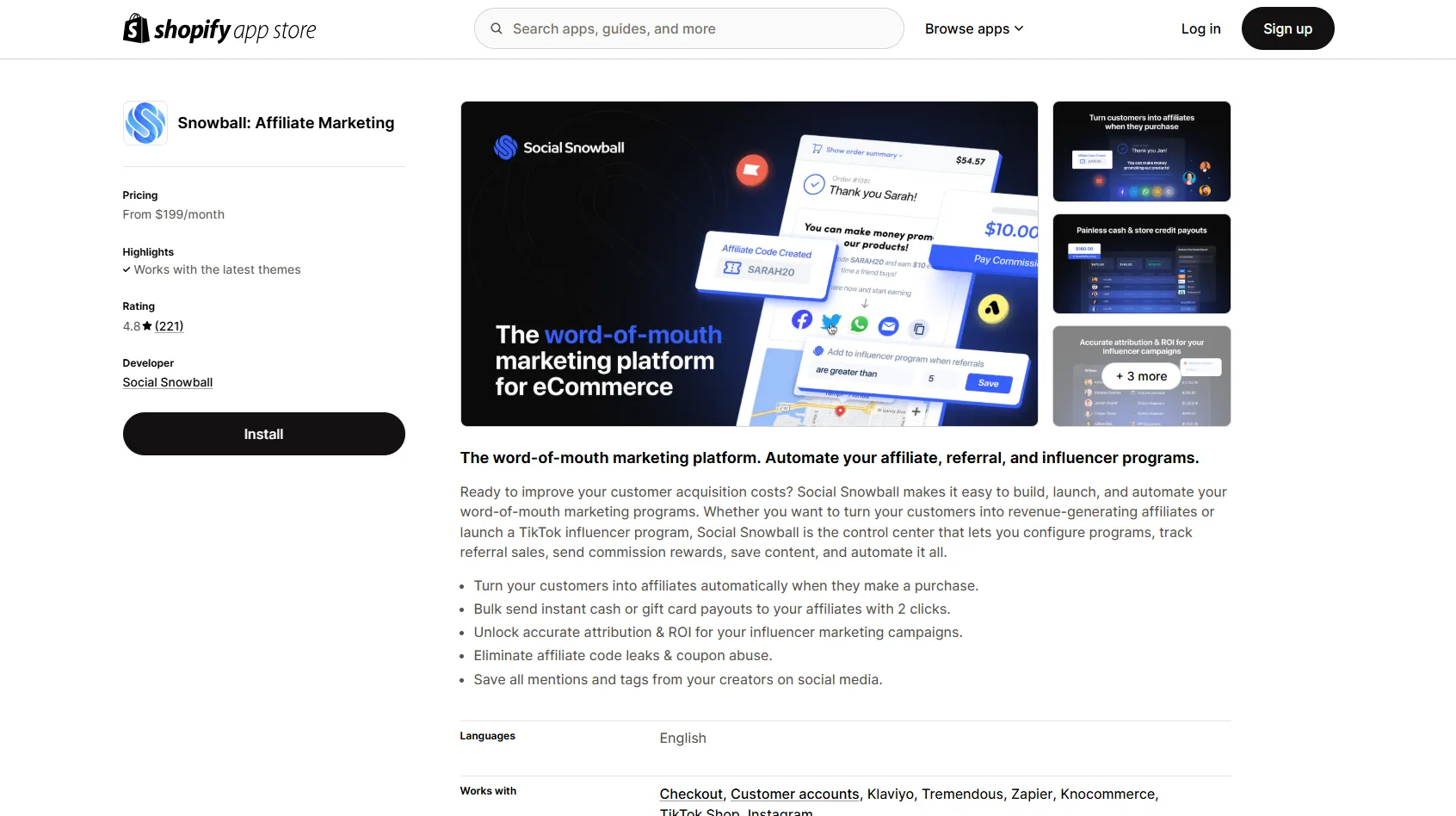
- Rating: 4.8/5
- Pricing: Starts at $199/month
- Best for: Automating affiliate and referral programs directly from the checkout page.
- Why you should use this app: Social Snowball turns every customer into an affiliate automatically after purchase, encouraging word-of-mouth marketing. It simplifies affiliate management with automatic payouts and tracking, helping you grow your customer base effortlessly while increasing brand loyalty.
2. Social Media Marketing Apps
2.1. Facebook & Instagram by Meta
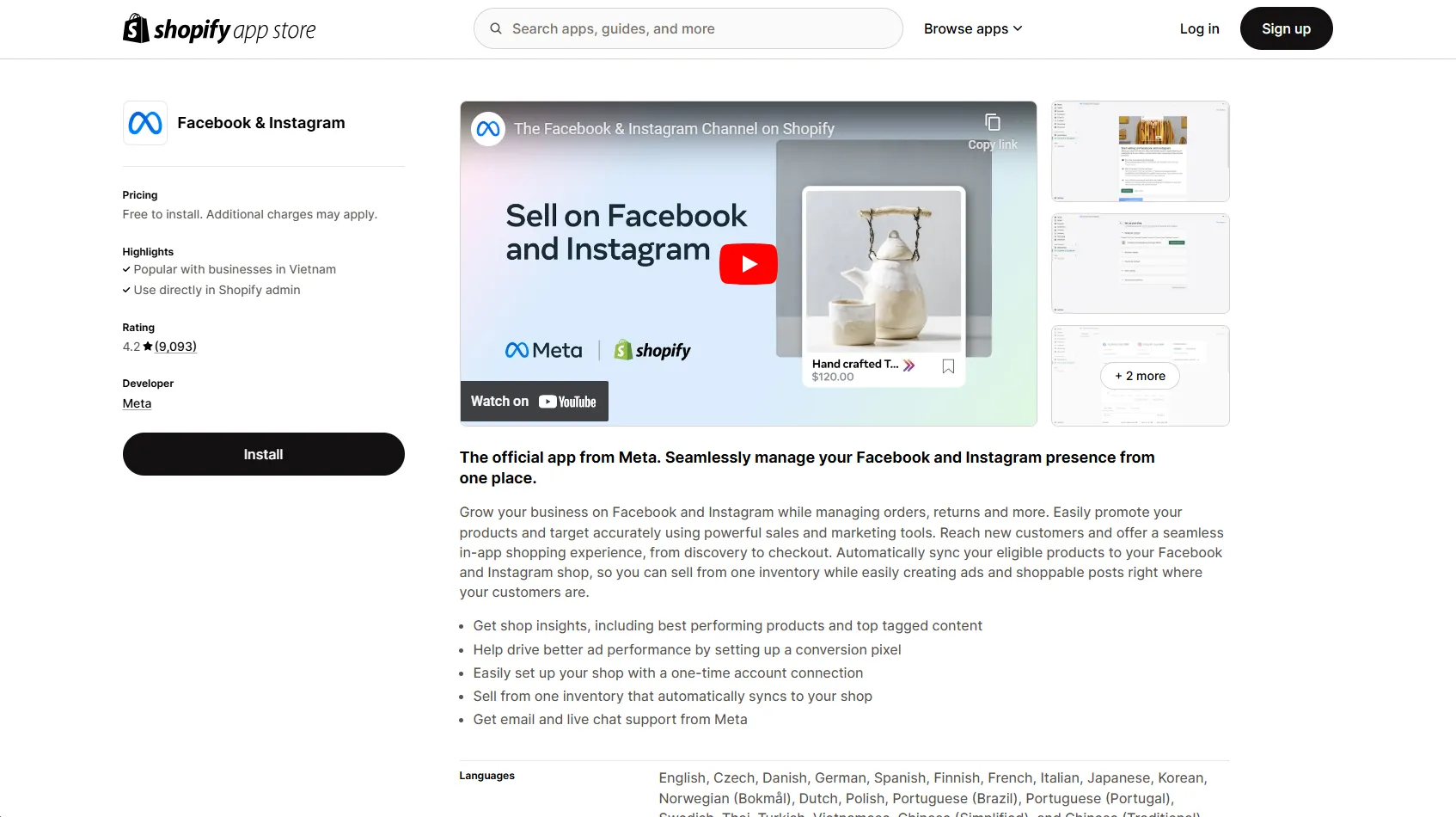
- Rating: 4.2/5
- Pricing: Free to install (ad costs apply)
- Best for: Running and managing Facebook and Instagram ads.
- Why you should use this app: This app offers seamless integration with Facebook and Instagram, allowing you to create, manage, and track ad campaigns directly from Shopify. It simplifies the ad process, helps target the right audience, and optimizes your marketing budget for maximum ROI.
2.2. Outfy – Social Media Automation
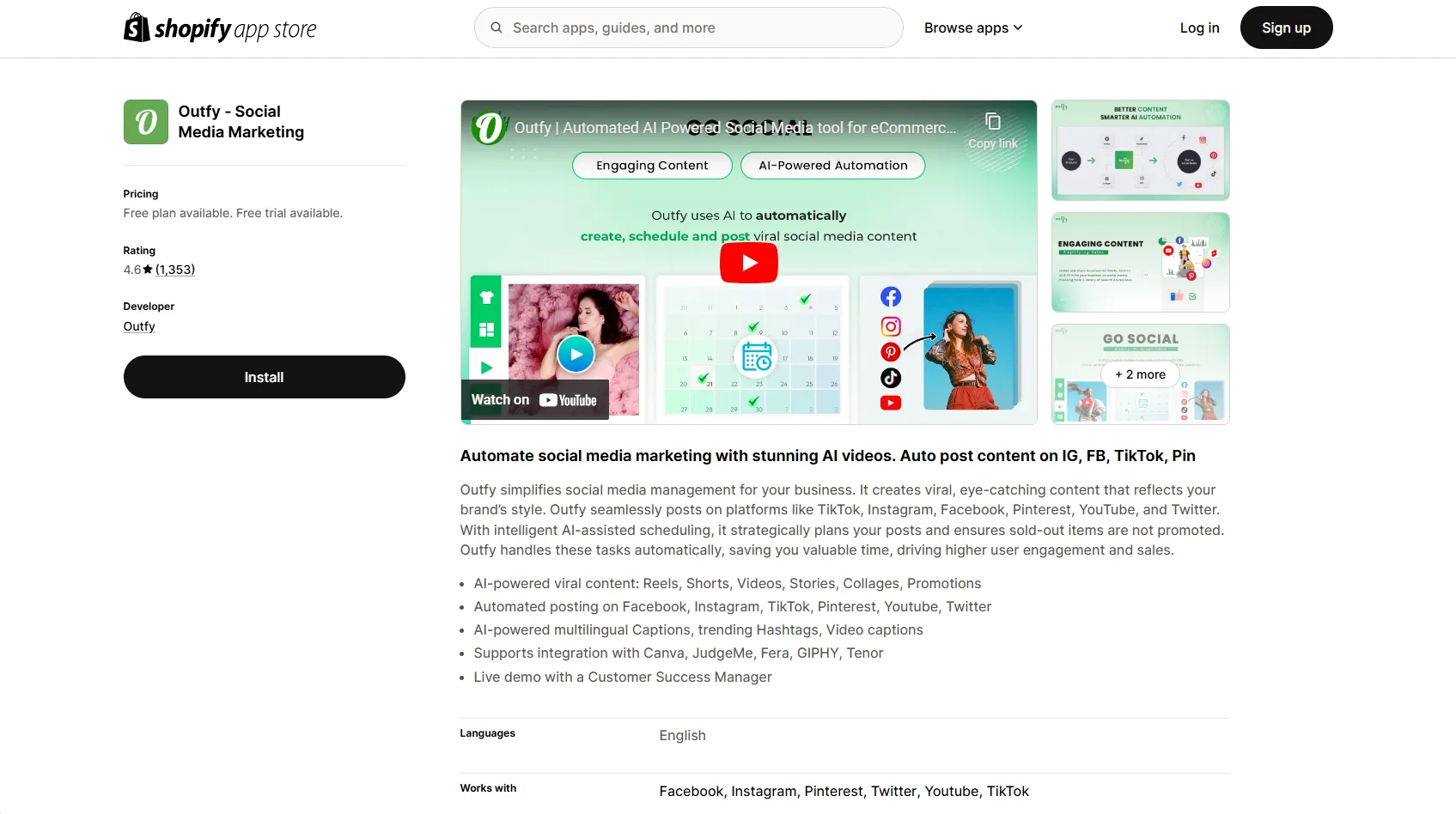
- Rating: 4.6/5
- Pricing: Free plan available; paid plans start at $15/month
- Best for: Automating social media posts across multiple platforms.
- Why you should use this app: Outfy automates product posts, promotions, and social media content across platforms like Facebook, Instagram, and Twitter. It saves time, maintains consistent engagement, and helps you reach a wider audience effortlessly without manual posting.
2.3. Pinterest
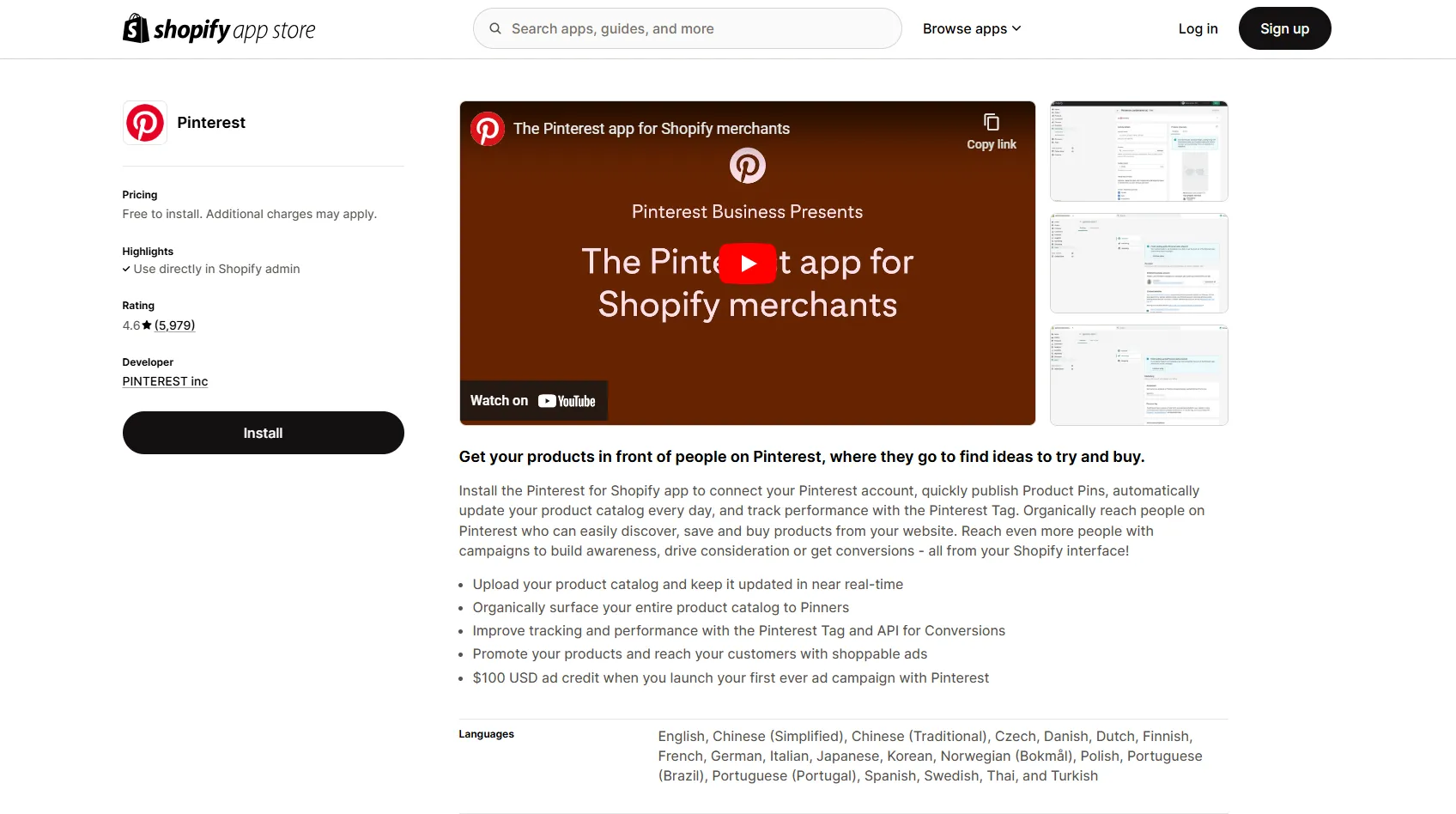
- Rating: 4.6/5
- Pricing: Free to install (ad costs apply)
- Best for: Driving traffic through Pinterest ads and organic content.
- Why you should use this app: Pinterest helps you tap into a highly visual audience by showcasing your products through pins. It boosts brand visibility, drives organic and paid traffic, and helps you reach customers actively looking for inspiration and shopping ideas.
3. Reviews and Ratings Apps
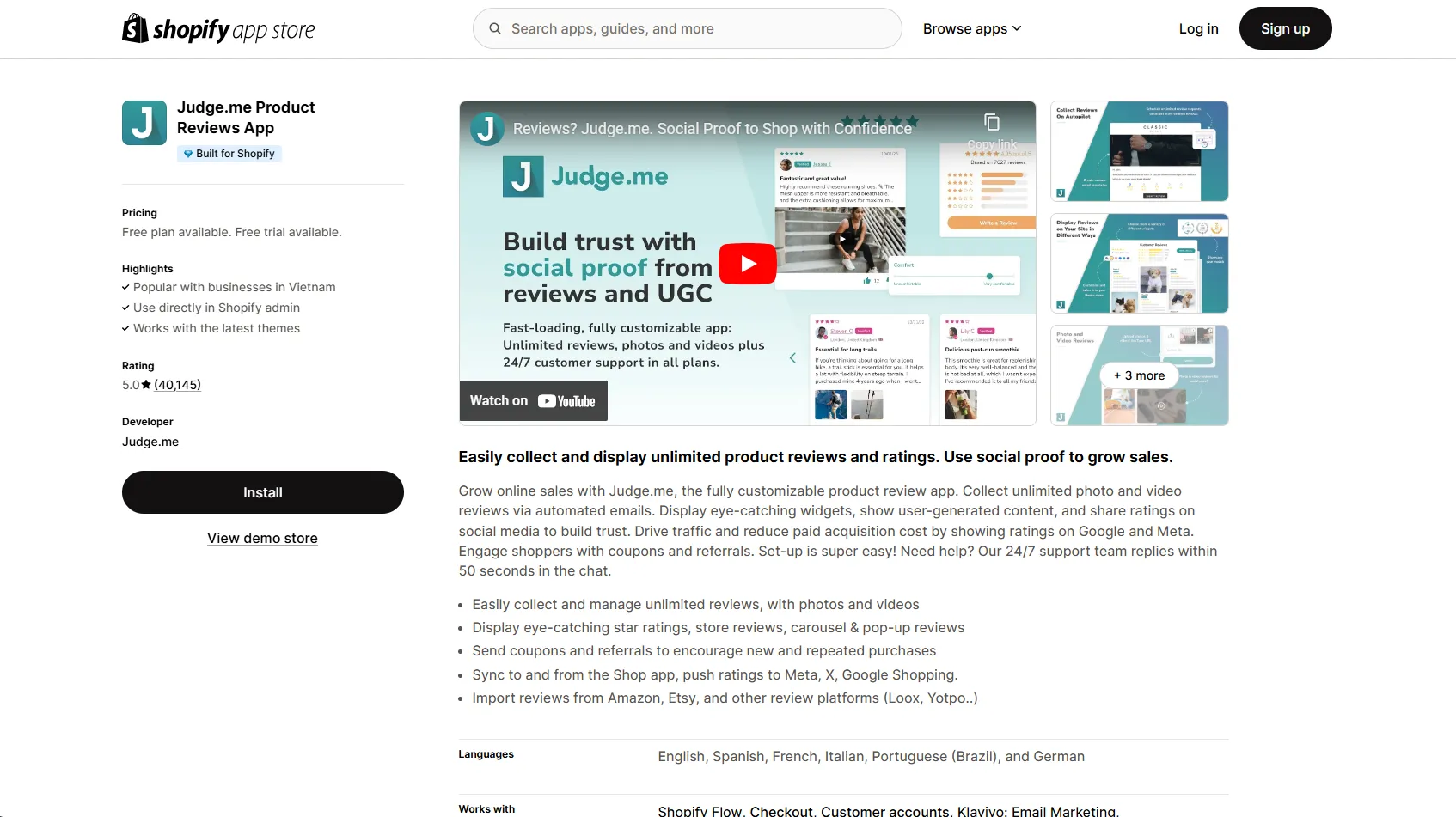
- Rating: 5/5 (40,145 reviews)
- Pricing: Free plan available; $15/month for advanced features
- Best for: Collecting and displaying verified product reviews.
- Why you should use this app: Judge.me helps build trust by collecting verified reviews, including photos and videos. It integrates smoothly with your store, boosts SEO, and enhances social proof, leading to higher conversions and increased customer confidence.
3.2. Loox Photo Reviews
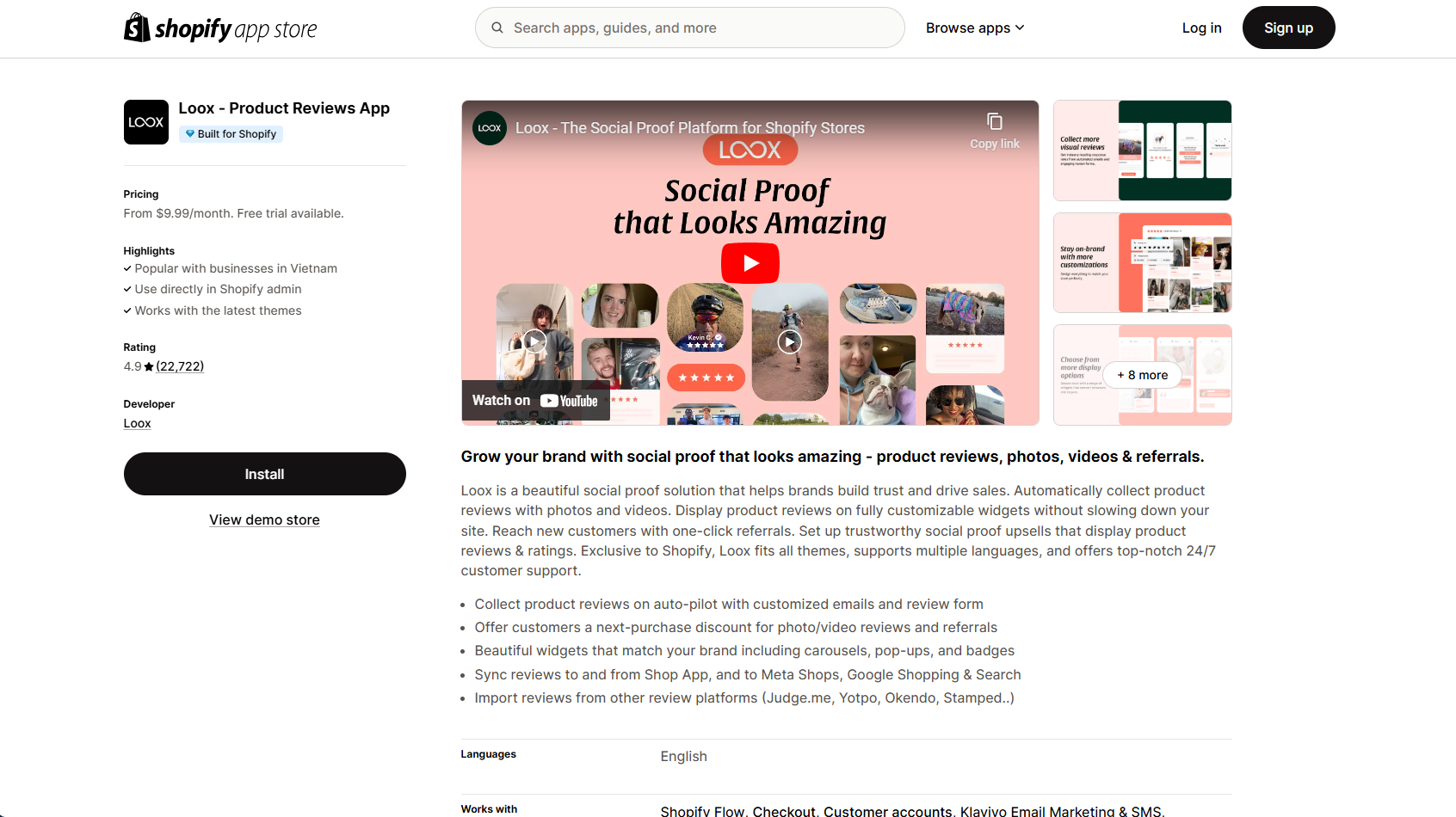
- Rating: 4.9/5 (22,722 reviews)
- Pricing: Starts at $9.99/month. Free trial available
- Best for: Visual reviews with customer photos.
- Why you should use this app: Loox enhances your store’s credibility with photo reviews from real customers. These visual testimonials build trust, engage visitors, and help convert browsing customers into buyers by showcasing authentic product experiences.
3.3. Yotpo Product Reviews & UGC
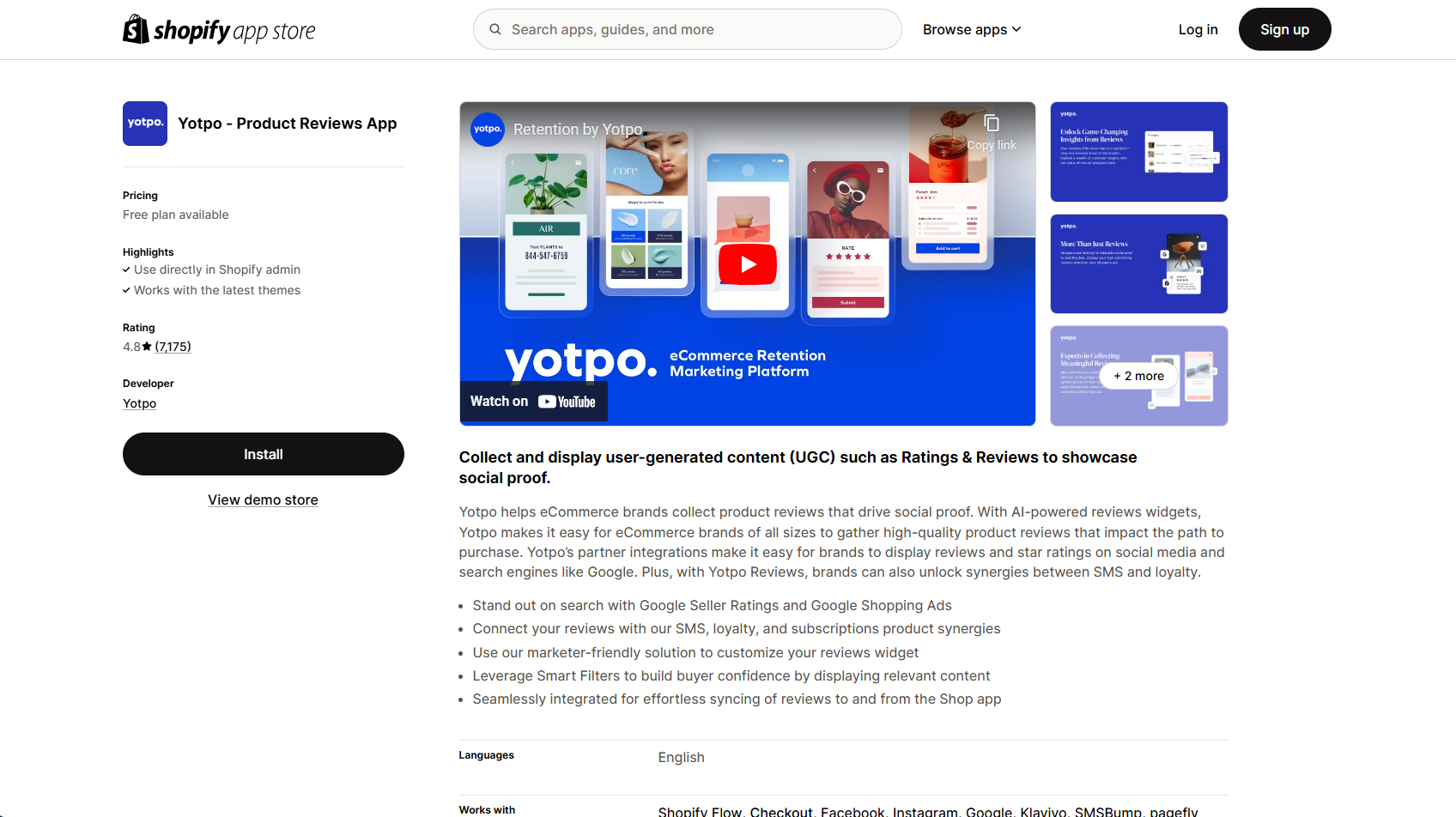
- Rating: 4.8/5 (7,175 reviews)
- Pricing: Free plan available; premium plans from $15/month
- Best for: Aggregating user-generated content and reviews.
- Why you should use this app: Yotpo collects and displays reviews, ratings, and user-generated content, enhancing your brand’s authenticity. It integrates with social media, improves SEO, and increases conversions by building strong customer trust.
4. Sales and Promotion Apps
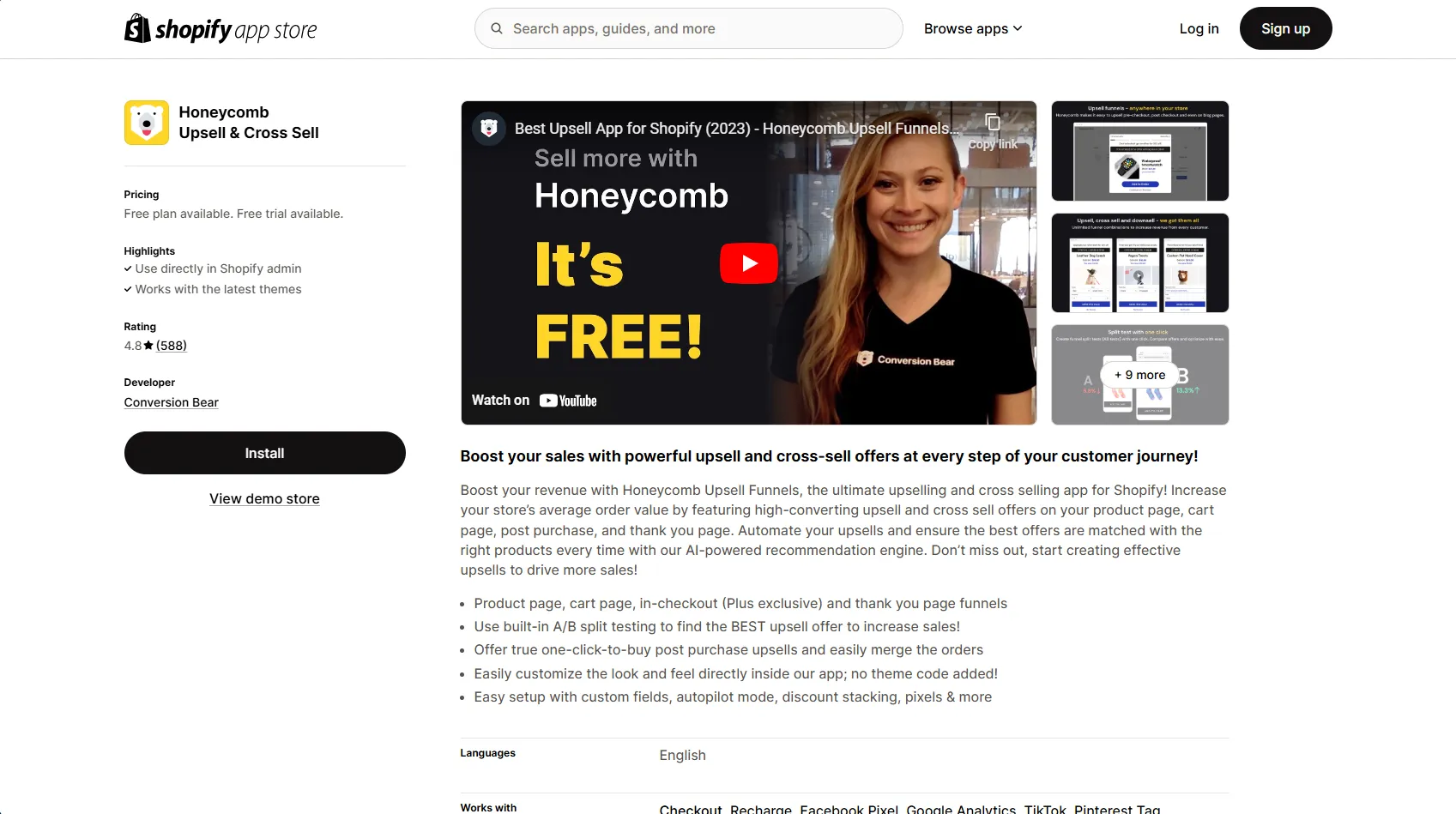
- Rating: 4.8/5 (588 reviews)
- Pricing: Free plan available; paid plans start at $49.99/month
- Best for: Creating upsell and cross-sell funnels.
- Why you should use this app: Honeycomb boosts your revenue by creating personalized upsell and cross-sell funnels. It’s easy to set up, integrates seamlessly with Shopify, and helps increase your average order value with targeted product suggestions.
4.2. Bold Discounts – The Sale App
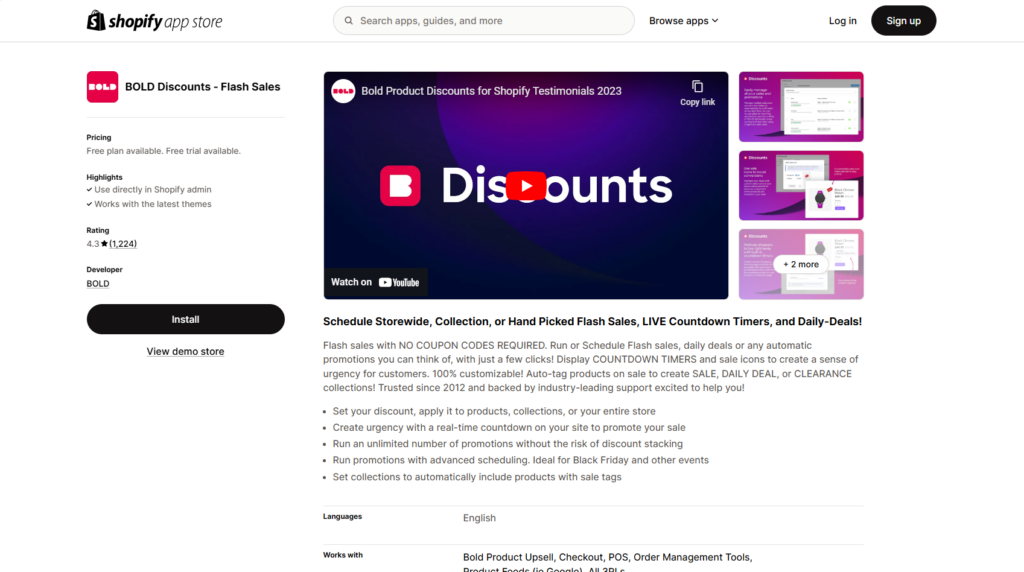
- Rating: 4.3/5 (1,224 reviews)
- Pricing: Free plan available. Starts at $19.99/month
- Best for: Automating sales and discount promotions.
- Why you should use this app: Bold Discounts automates your sales campaigns, allowing you to schedule, manage, and display discounts without manual adjustments. It’s perfect for flash sales, seasonal promotions, and increasing conversions effortlessly.
4.3. Frequently Bought Together
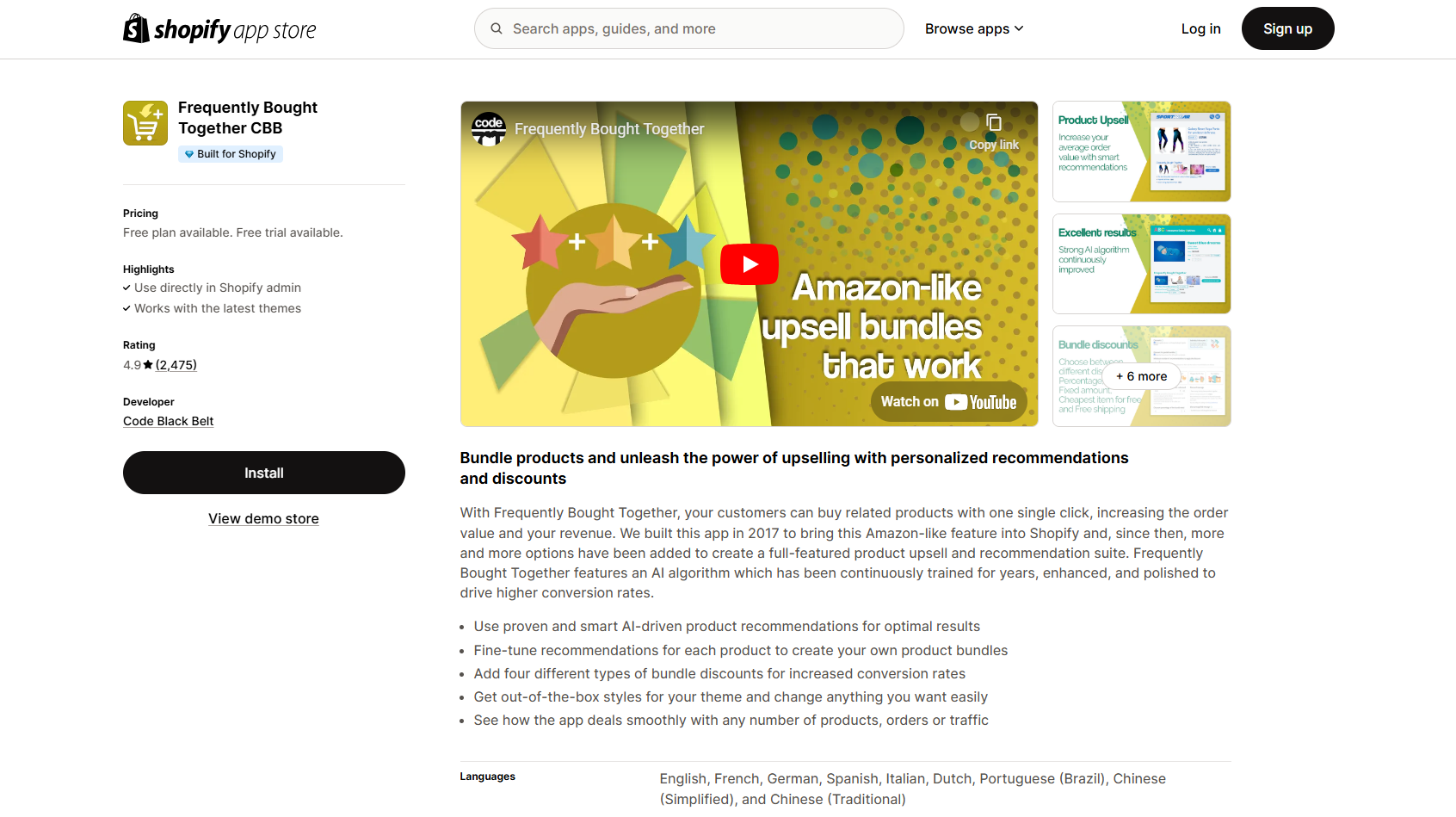
- Rating: 4.9/5 (2,475 reviews)
- Pricing: $9.99/month
- Best for: Suggesting product bundles to increase average order value.
- Why you should use this app: This app recommends complementary products based on purchase history, encouraging customers to buy more. It’s an effective way to increase your average order value and improve the shopping experience.
5. Email and SMS Marketing Apps
5.1. Klaviyo: Email Marketing & SMS
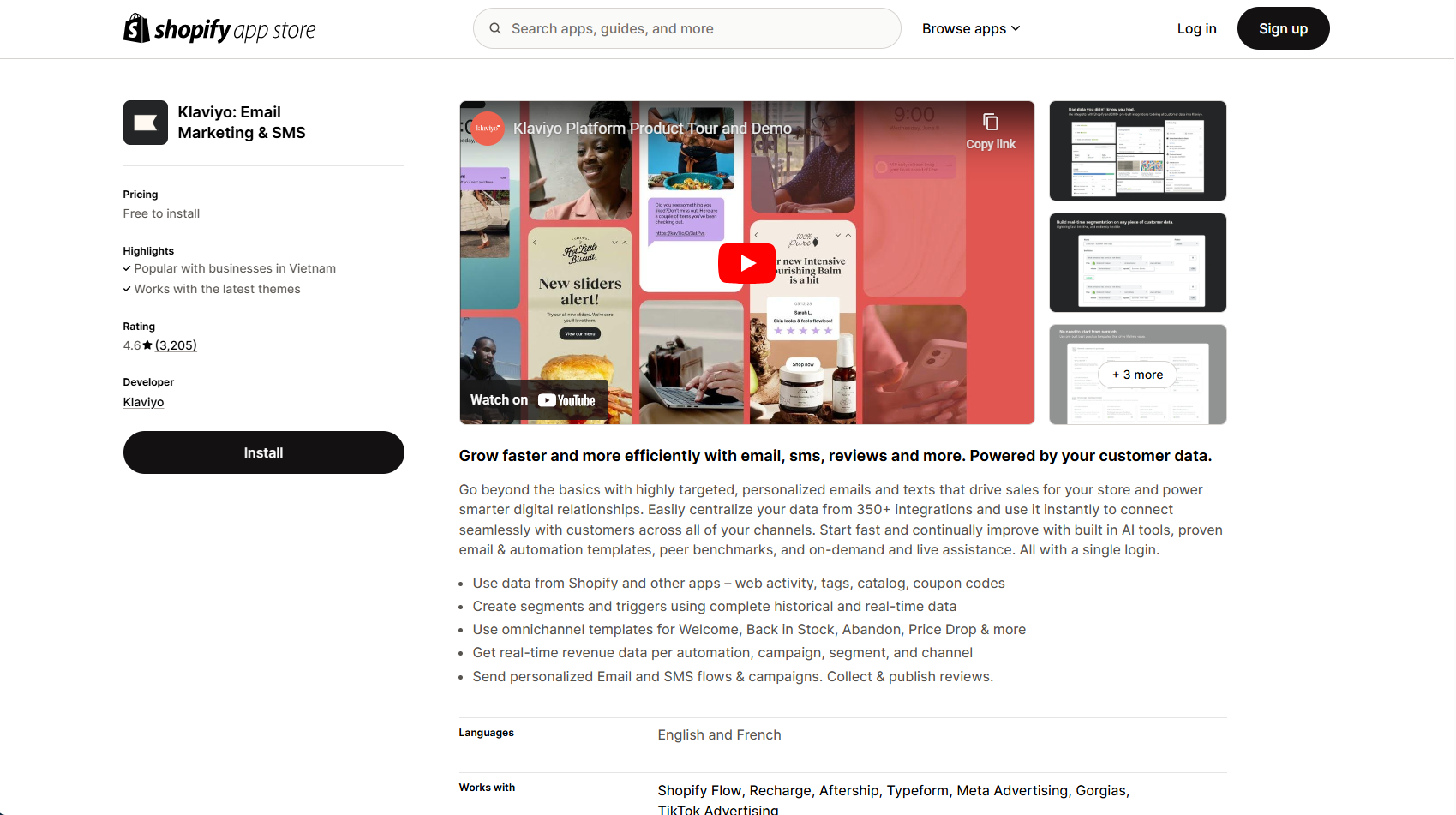
- Rating: 4.6/5 (3,205 reviews)
- Pricing: Free for up to 250 contacts; paid plans start at $20/month
- Best for: Data-driven email and SMS campaigns.
- Why you should use this app: Klaviyo offers powerful segmentation, automation, and analytics tools to deliver personalized email and SMS campaigns. It helps increase engagement, boost conversions, and retain customers with data-driven insights.
5.2. Omnisend Email Marketing & SMS
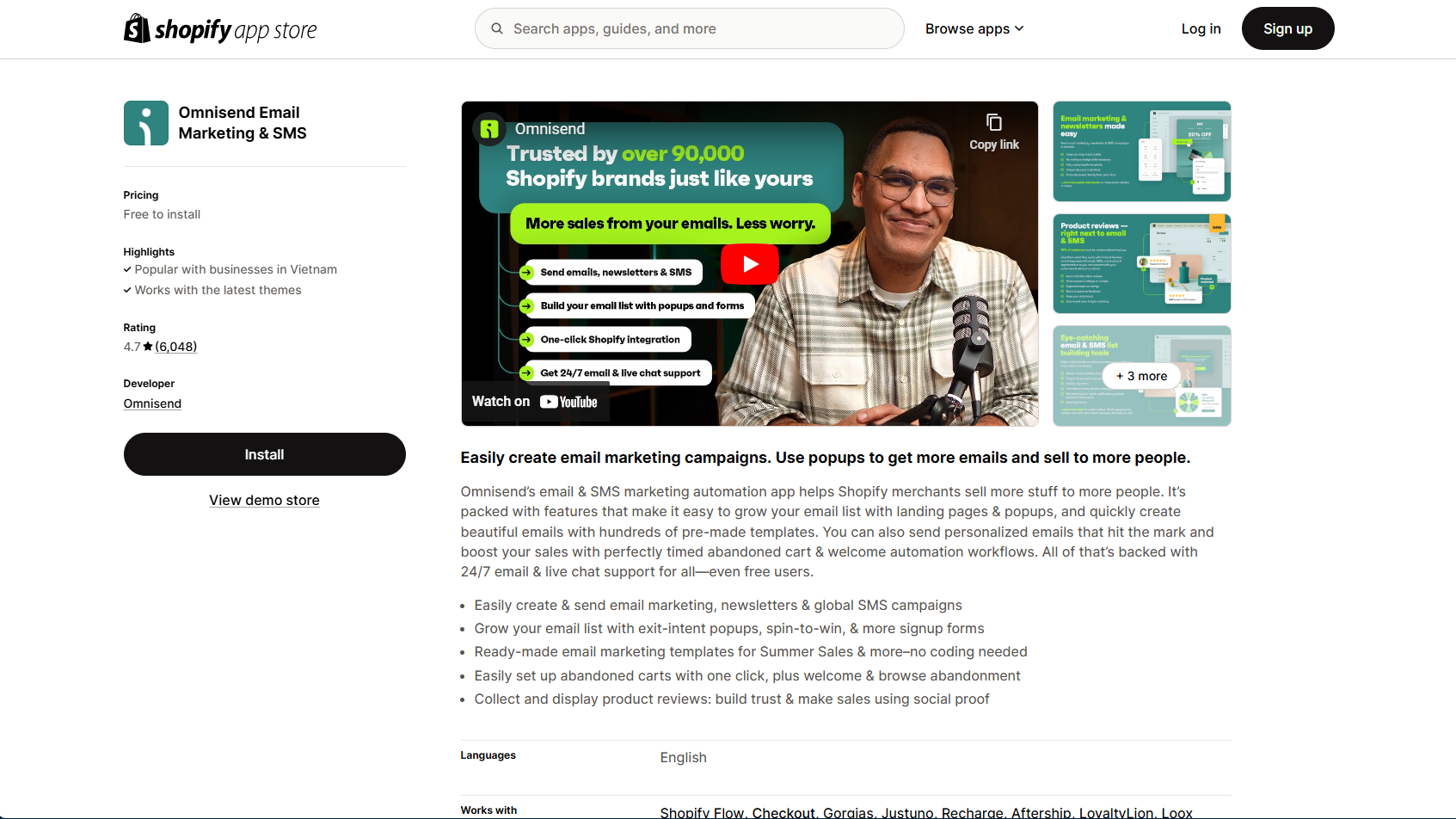
- Rating: 4.7/5 (6,048 reviews)
- Pricing: Free plan available; paid plans start at $16/month
- Best for: Automated email workflows and SMS marketing.
- Why you should use this app: Omnisend simplifies multi-channel marketing by automating emails and SMS campaigns. It’s easy to use, integrates well with Shopify, and helps drive sales with targeted messaging and personalized offers.
5.3. SMSBump: SMS Marketing & Automation
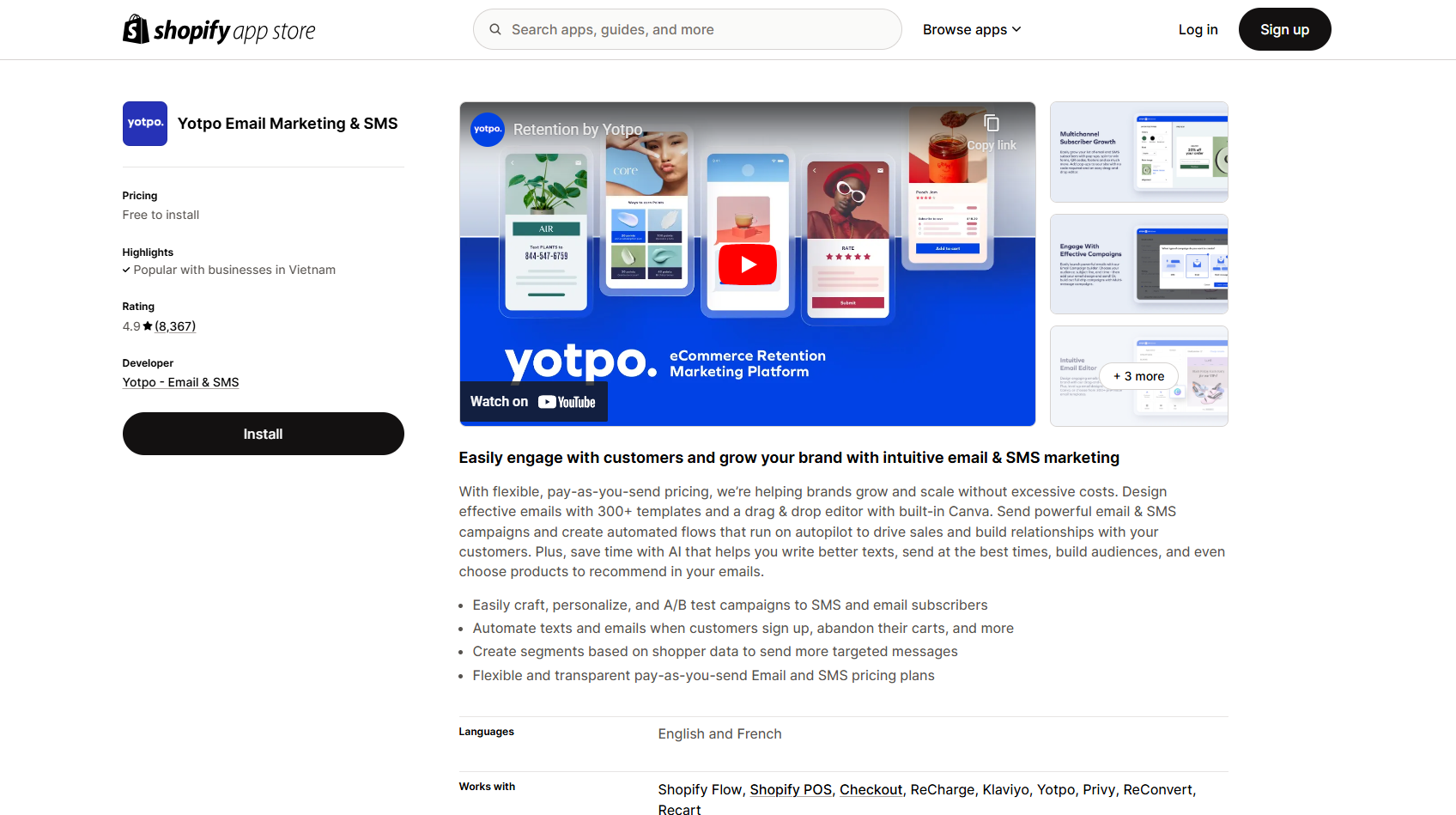
- Rating: 4.9/5 (8,367 reviews)
- Pricing: Pay-as-you-go SMS pricing; premium features start at $19/month
- Best for: SMS campaigns and abandoned cart recovery.
- Why you should use this app: SMSBump helps recover lost sales with automated SMS reminders, abandoned cart messages, and personalized promotions. It’s an effective tool to boost engagement and drive quick conversions.
6. Page Builders and Elements Apps
6.1. PageFly Landing Page Builder
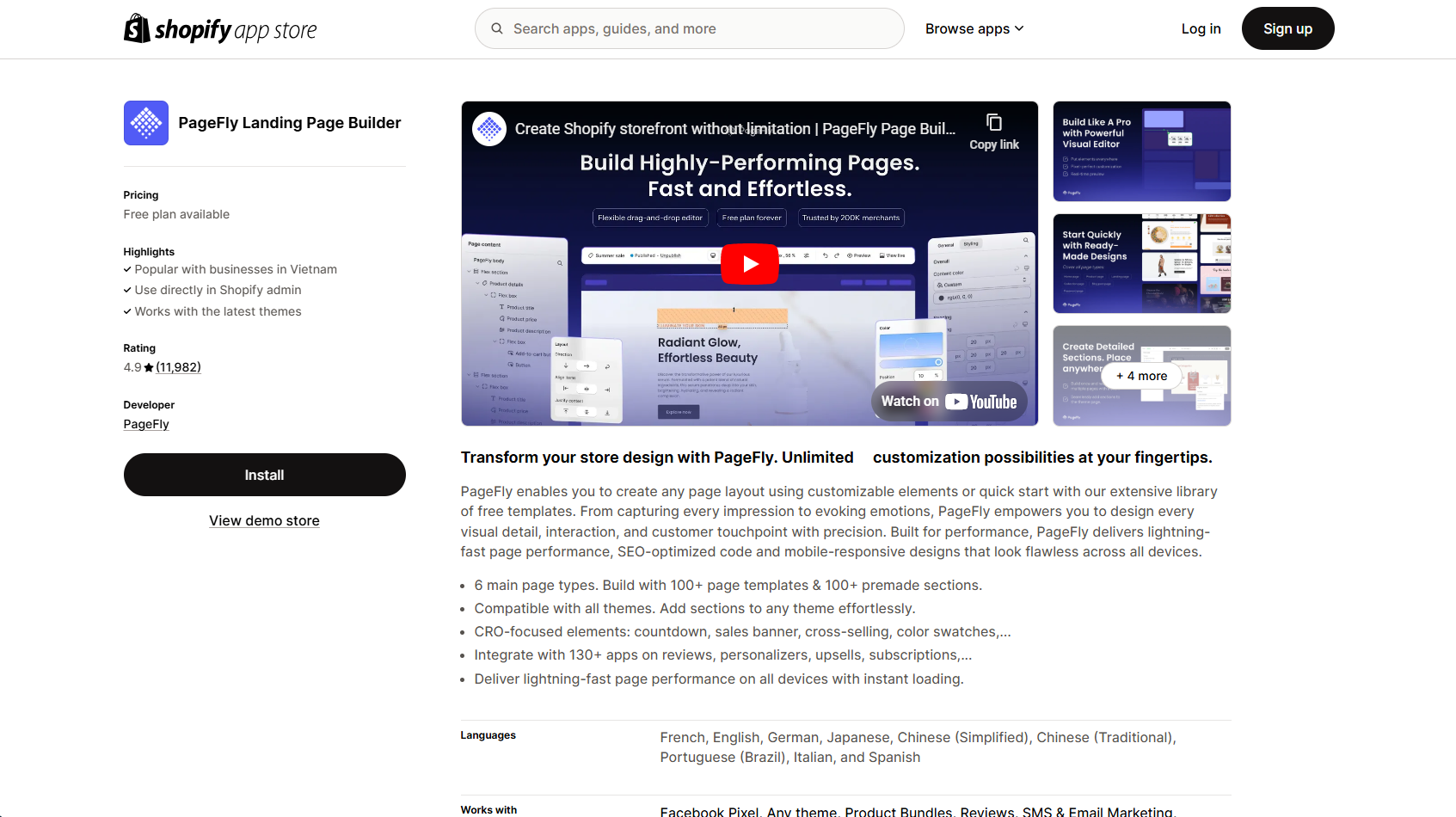
- Rating: 4.9/5 (11,982 reviews)
- Pricing: Free plan available; paid plans start at $24/month
- Best for: Customizing landing pages without coding.
- Why you should use this app: PageFly empowers you to create high-converting, custom landing pages with a simple drag-and-drop interface. It offers flexibility, ease of use, and integrates smoothly with Shopify, making it perfect for any skill level.
6.2. Shogun Landing Page Builder
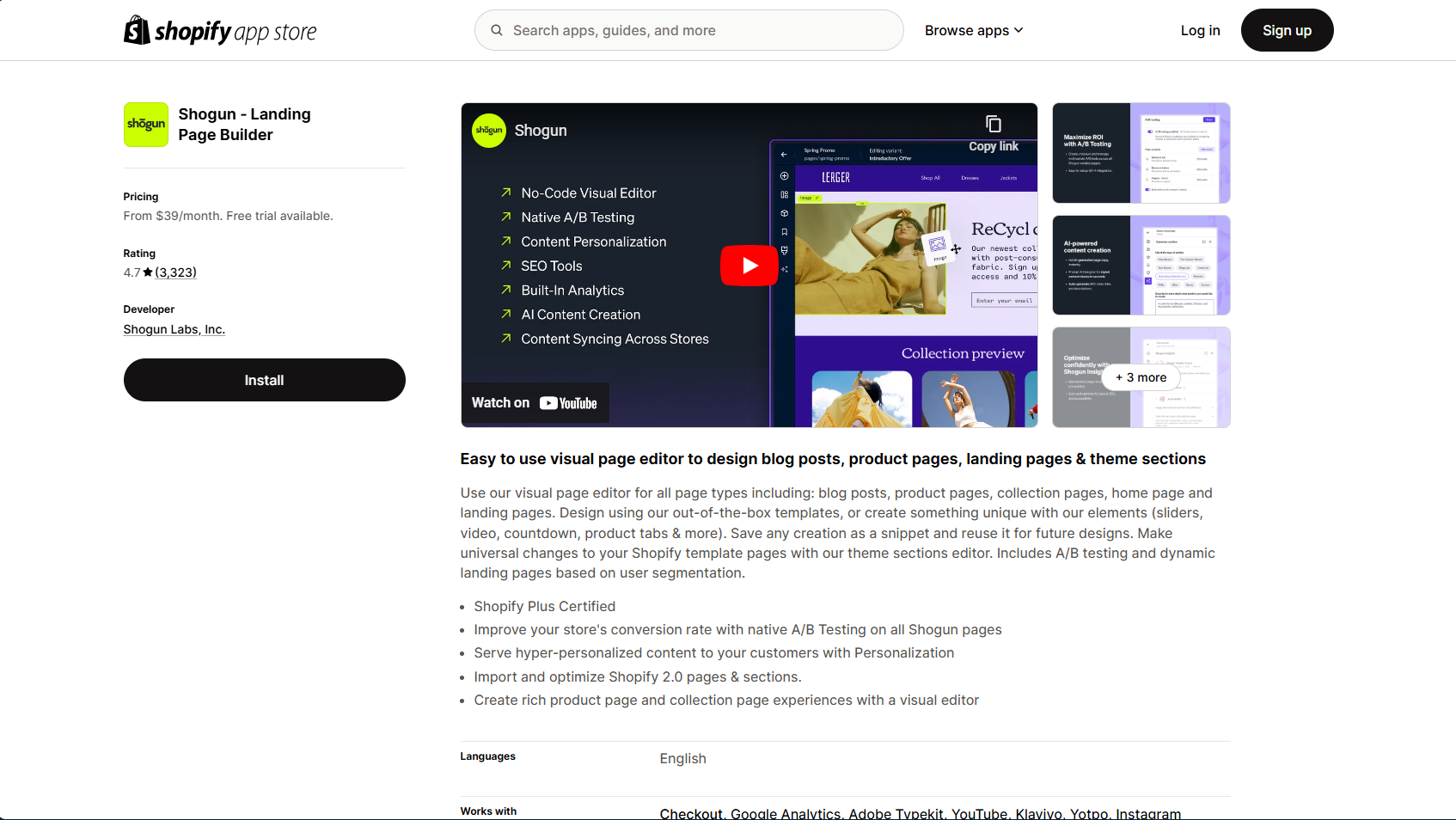
- Rating: 4.7/5 (3,323 reviews)
- Pricing: Starts at $39/month. Free trial available
- Best for: Drag-and-drop page building for high-converting pages.
- Why you should use this app: Shogun provides flexible design tools to create stunning, responsive pages that drive conversions. Its easy-to-use interface is perfect for creating landing pages, product pages, and more without coding.
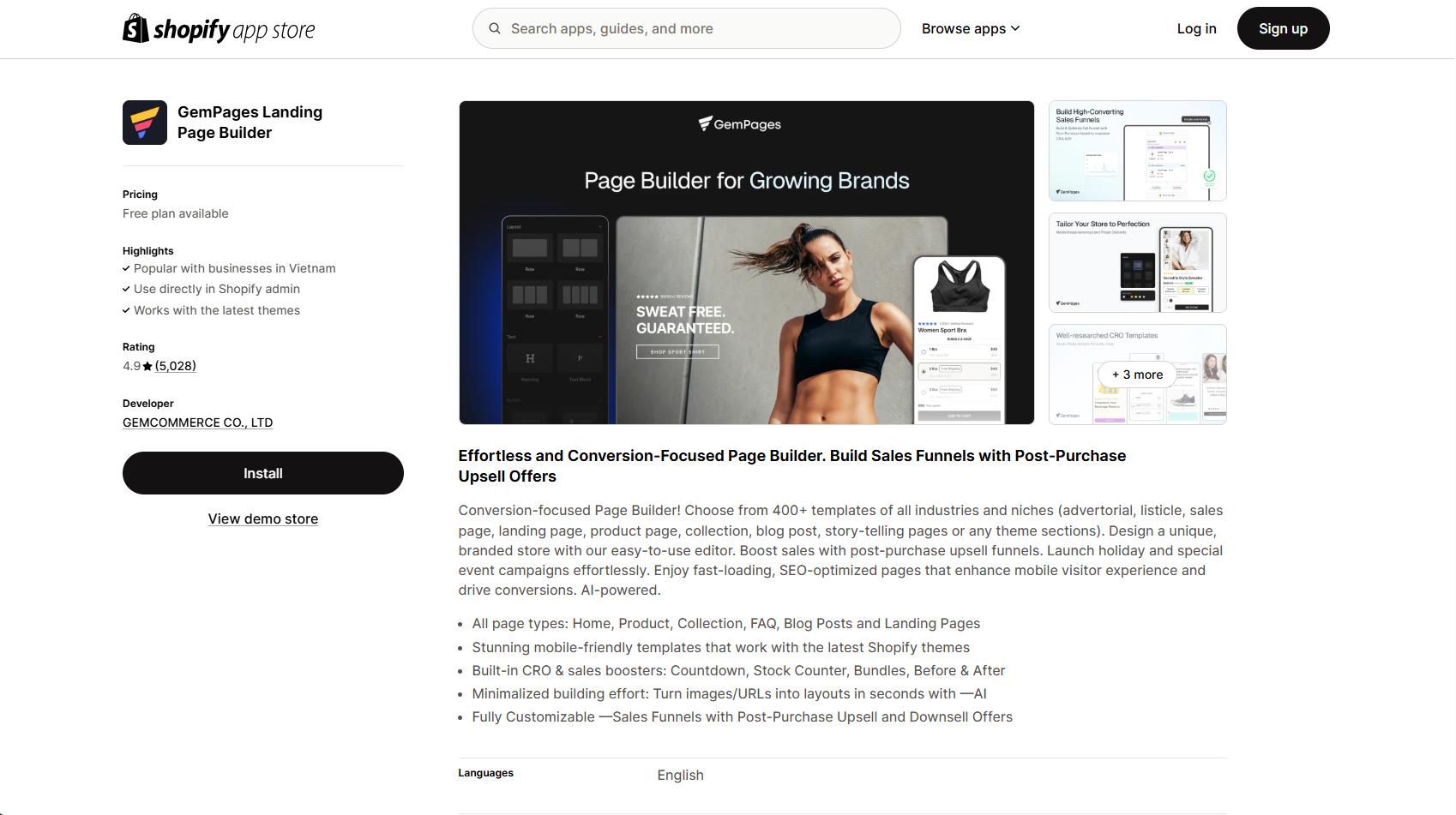
- Rating: 4.9/5 (5,028 reviews)
- Pricing: Free trial available; paid plans start at $29/month
- Best for: Creating custom product and landing pages.
- Why you should use this app: GemPages simplifies the process of building beautiful, responsive pages. It helps you create a unique shopping experience, increase engagement, and drive conversions without needing technical expertise.
7. Search Engine & Ad Apps
7.1. SEO Manager
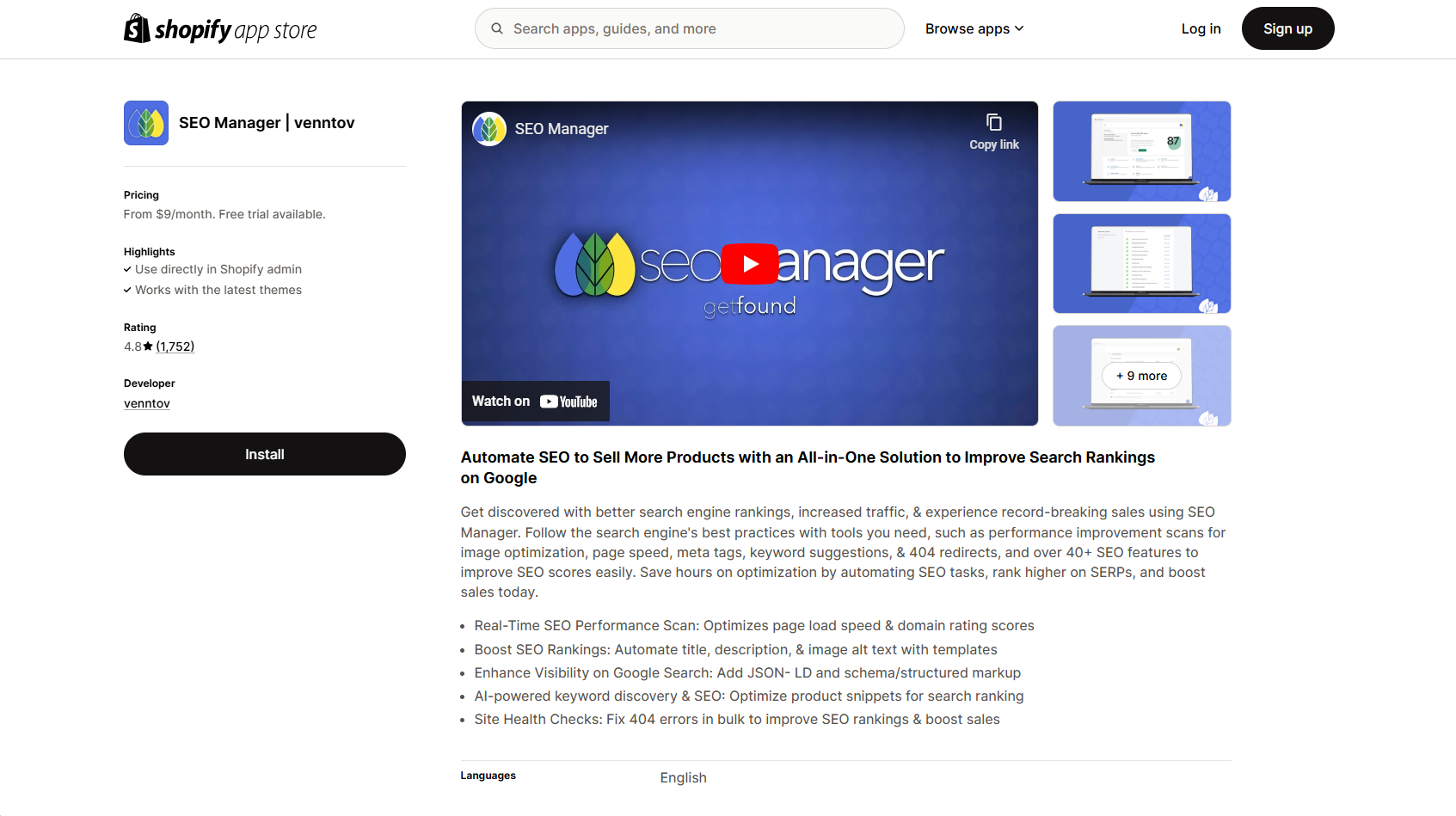
- Rating: 4.8/5 (1,752 reviews)
- Pricing: From $9/month. Free trial available.
- Best for: On-page SEO optimization.
- Why you should use this app: SEO Manager helps improve your store’s search engine rankings by optimizing product pages, meta tags, and site structure. It’s an essential tool for increasing organic traffic and boosting visibility.
7.2. Google Channel
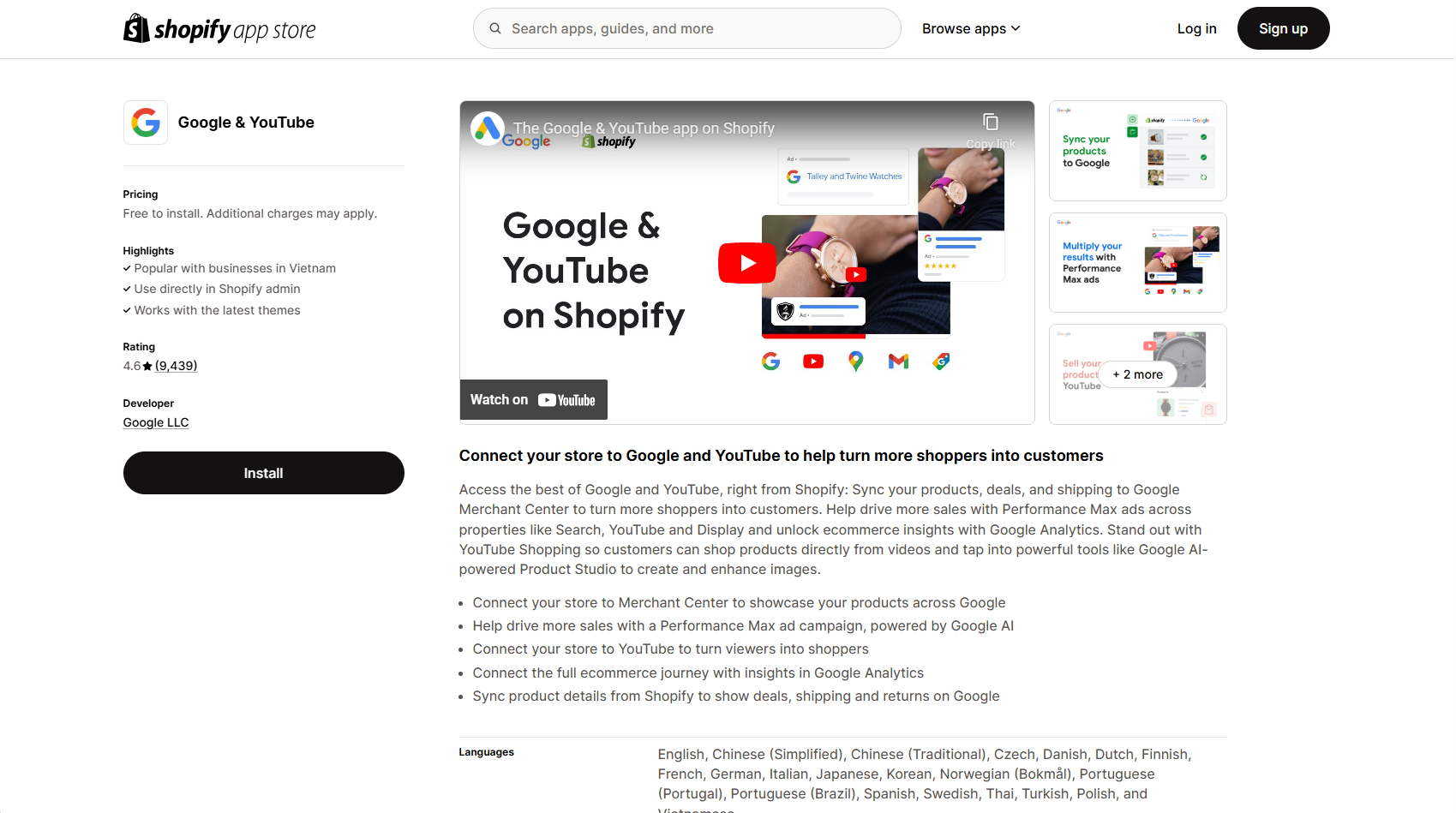
- Rating: 4.6/5 (9,439 reviews)
- Pricing: Free to install (ad costs apply)
- Best for: Running Google Shopping campaigns.
- Why you should use this app: Google Channel connects your Shopify store to Google Shopping, making it easier for potential customers to find your products. It’s a powerful tool for increasing visibility and driving traffic.
7.3. AdRoll Marketing & Advertising
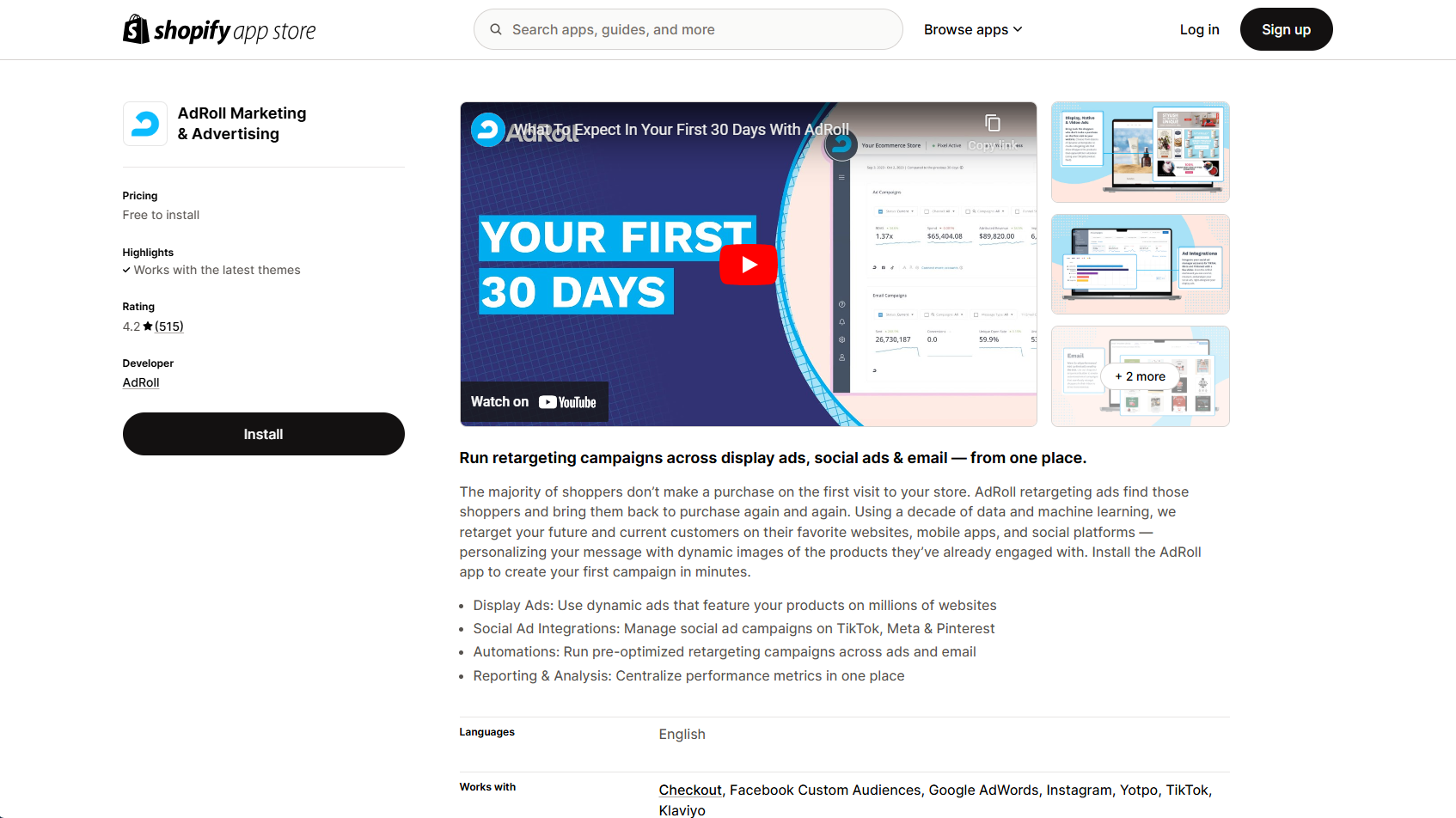
- Rating: 4.2/5 (515 reviews)
- Pricing: Free plan available; paid plans from $25/month
- Best for: Retargeting and cross-channel ads.
- Why you should use this app: AdRoll helps you retarget website visitors and run cross-platform ads, maximizing your marketing reach and improving ROI. It’s ideal for increasing brand awareness and driving conversions.
8. Customer Service and Fulfillment Apps
8.1. Gorgias – Helpdesk & Live Chat
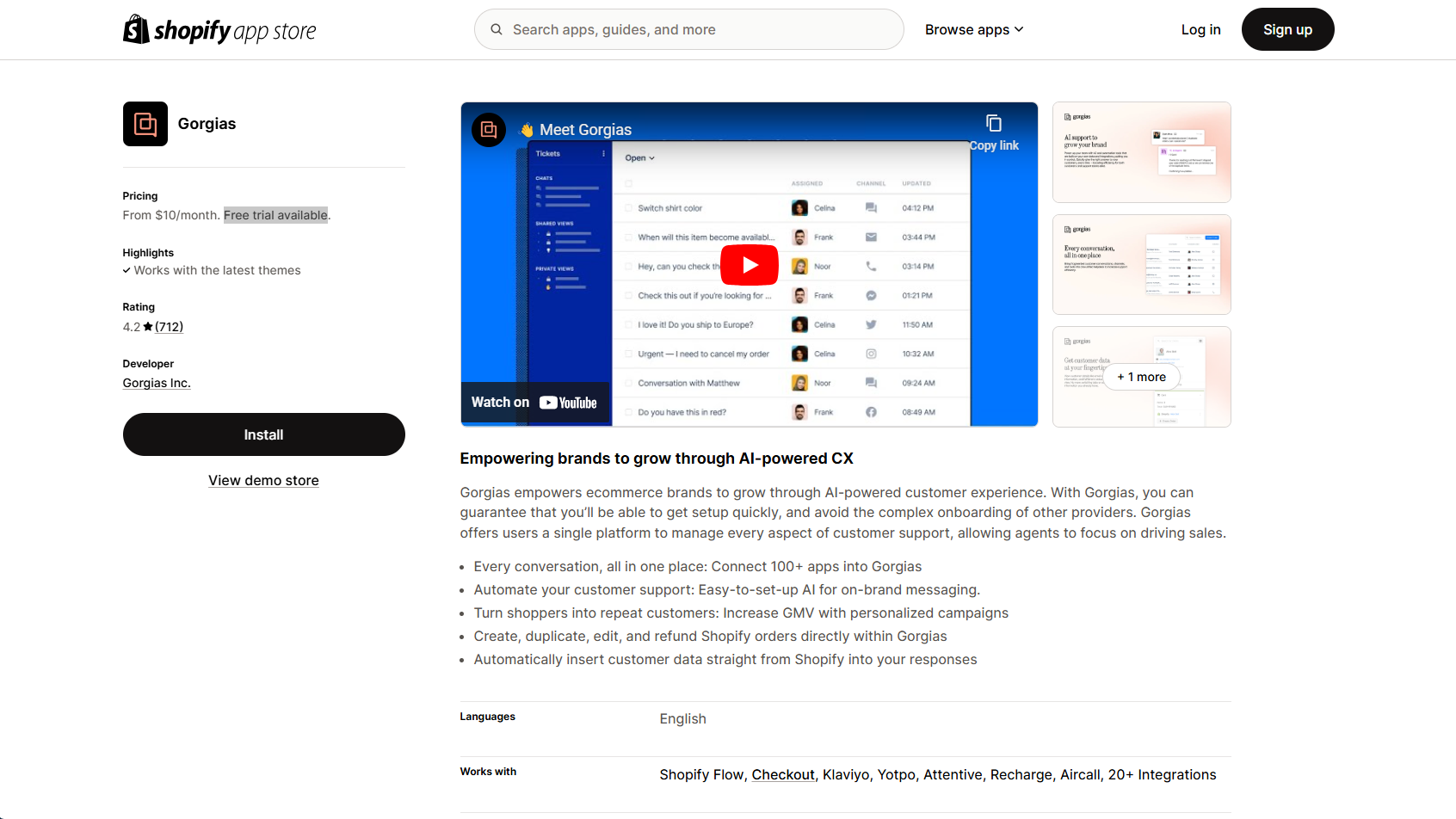
- Rating: 4.2/5 (712 reviews)
- Pricing: Starts at $10/month. Free trial available
- Best for: Managing customer support through multiple channels.
- Why you should use this app: Gorgias centralizes customer support by integrating email, chat, and social media interactions into one dashboard. It’s perfect for providing fast, personalized responses and improving customer satisfaction.
8.2. AfterShip Order Tracking & SMS
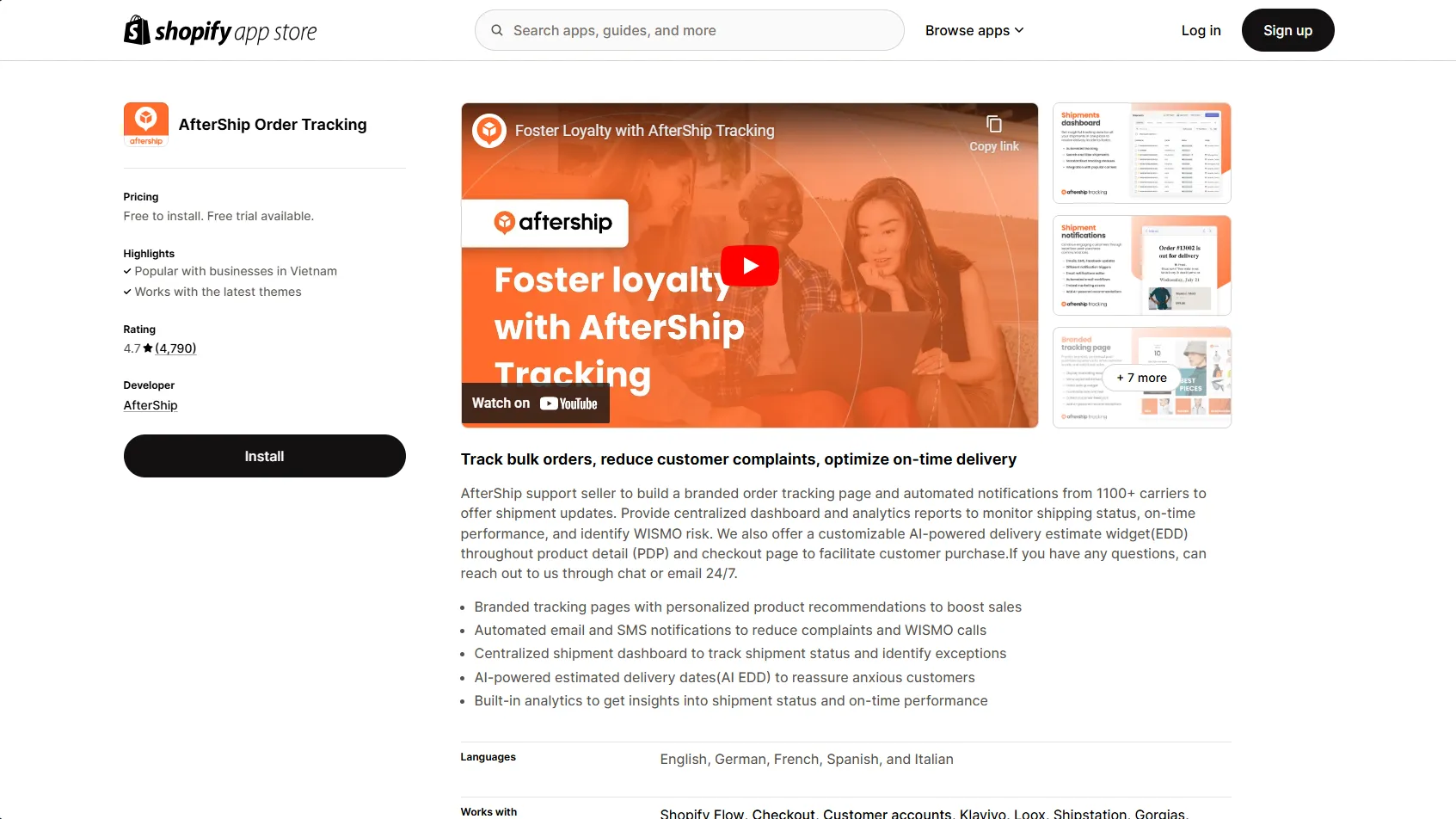
- Rating: 4.7/5 (4,790 reviews)
- Pricing: Free plan available; paid plans start at $11/month
- Best for: Providing real-time order tracking updates.
- Why you should use this app: AfterShip keeps customers informed with real-time tracking updates and notifications. It reduces support inquiries and enhances customer trust by providing transparency throughout the delivery process.
8.3. Zendesk Support
- Rating: 4.5/5 (7,175 reviews)
- Pricing: Starts at $49/month
- Best for: Advanced customer support ticketing.
- Why you should use this app: Zendesk streamlines your customer support process with robust ticketing, automation, and reporting tools. It helps improve response times, manage customer inquiries, and deliver exceptional support.
9. Mobile App Builder Apps
9.1. Vajro – Mobile App Builder
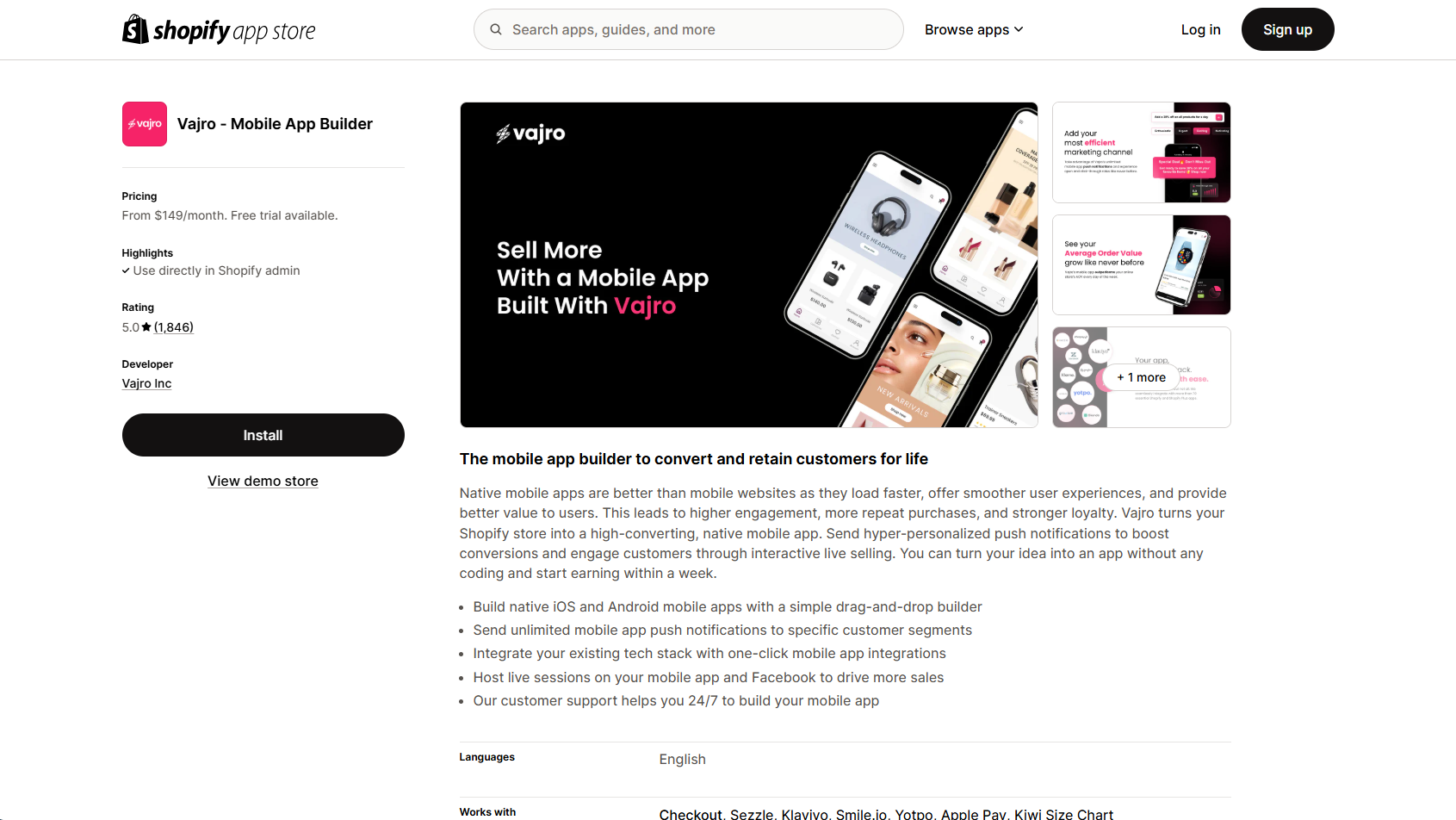
- Rating: 5/5 (1,846 reviews)
- Pricing: Free trial available; plans start at $149/month
- Best for: Creating a custom mobile app for your store.
- Why you should use this app: Vajro allows you to create a native mobile app for your store without coding. It offers features like push notifications and personalized shopping experiences, helping you engage customers and drive sales.
9.2. Tapcart – Mobile App Builder
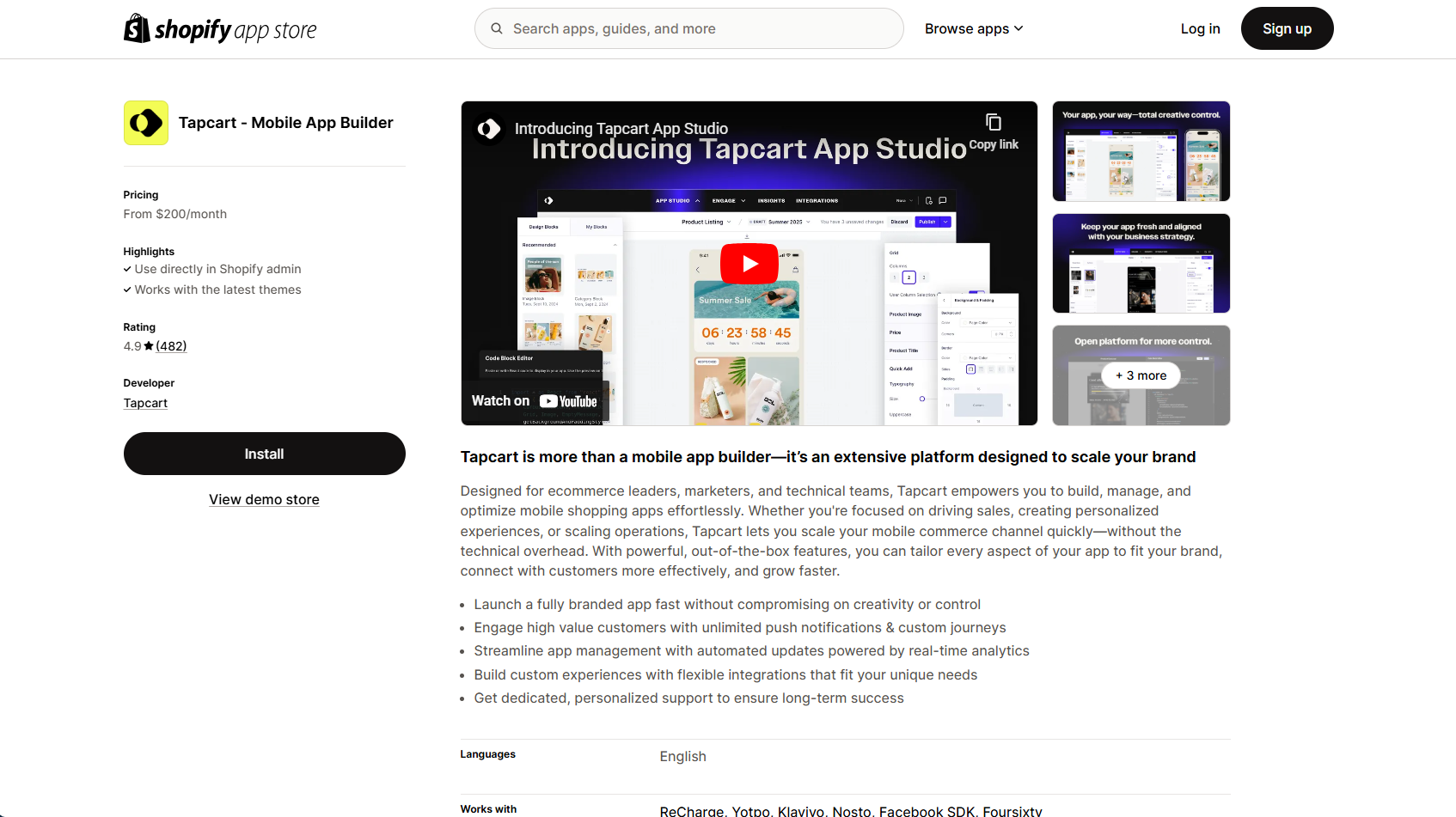
- Rating: 4.9/5 (482 reviews)
- Pricing: Starts at $200/month
- Best for: High-growth stores looking to build a native mobile app.
- Why you should use this app: Tapcart helps you create a seamless, high-performing mobile shopping app. It’s perfect for brands looking to enhance mobile experiences, increase repeat purchases, and build customer loyalty.
9.3. Plobal Apps
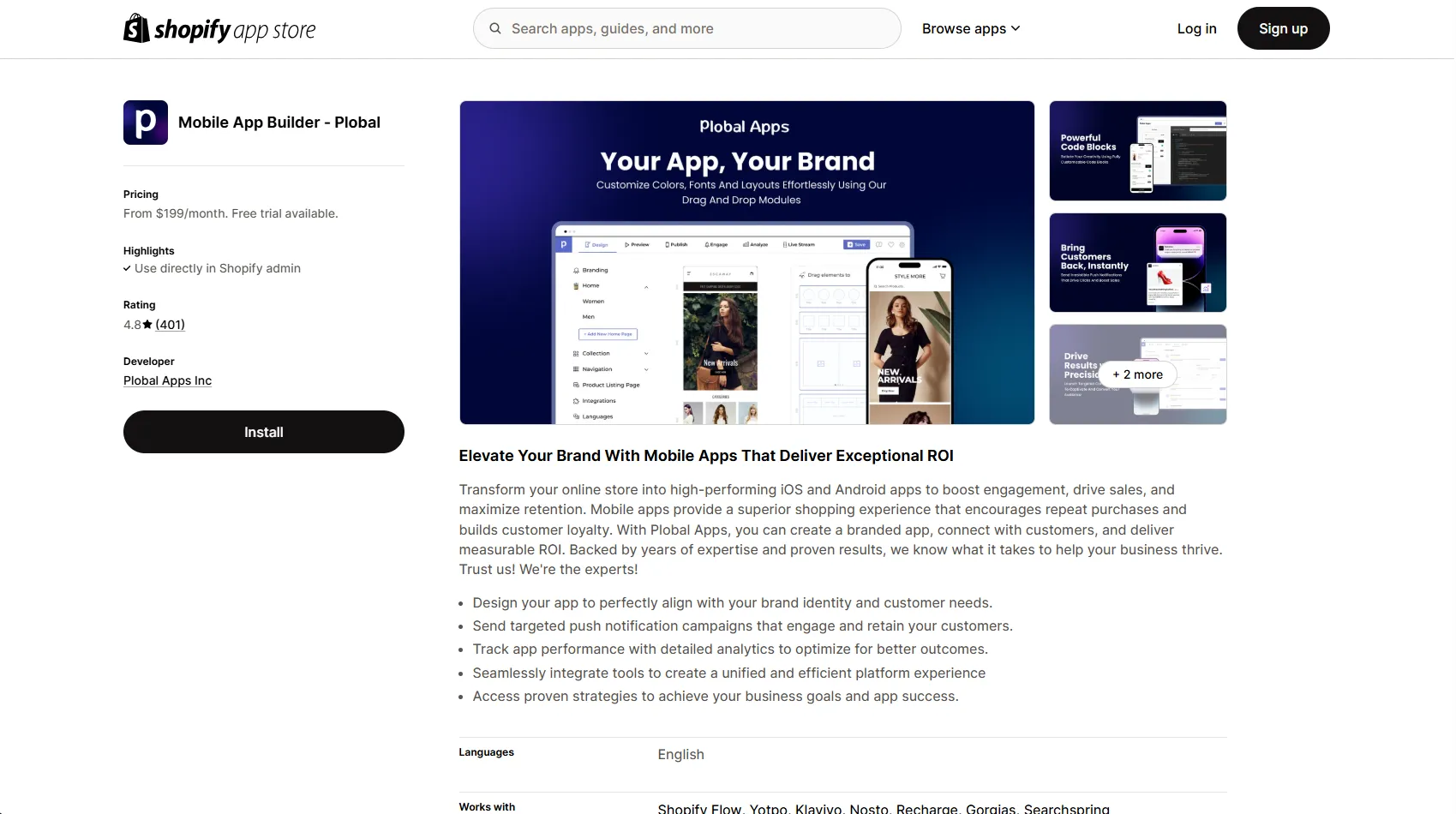
- Rating: 4.8/5 (401 reviews)
- Pricing: Starts at $199/month. Free trial available
- Best for: Creating seamless mobile shopping experiences.
- Why you should use this app: Plobal Apps transforms your Shopify store into a mobile app, providing an intuitive, mobile-friendly shopping experience. It’s ideal for engaging mobile customers and boosting sales.
10. Store Analytics Apps
10.1. Google Analytics by Littledata
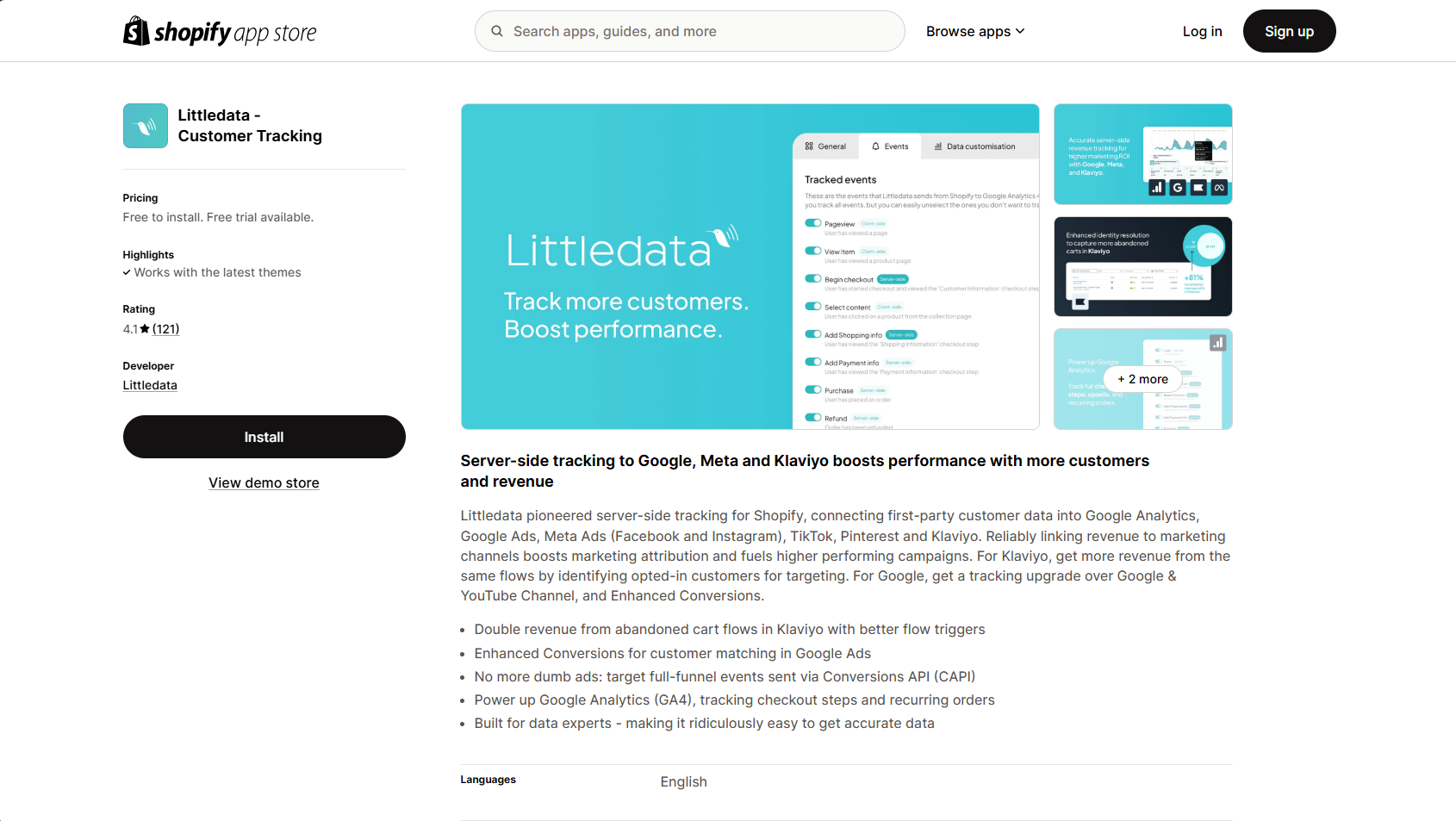
- Rating: 4.1/5 (121 reviews)
- Pricing: Free trial available; plans start at $39/month
- Best for: Advanced Google Analytics integration.
- Why you should use this app: Littledata enhances your Google Analytics tracking by providing detailed insights into customer behavior, sales performance, and marketing campaigns. It’s perfect for making data-driven decisions.
10.2. Report Pundit
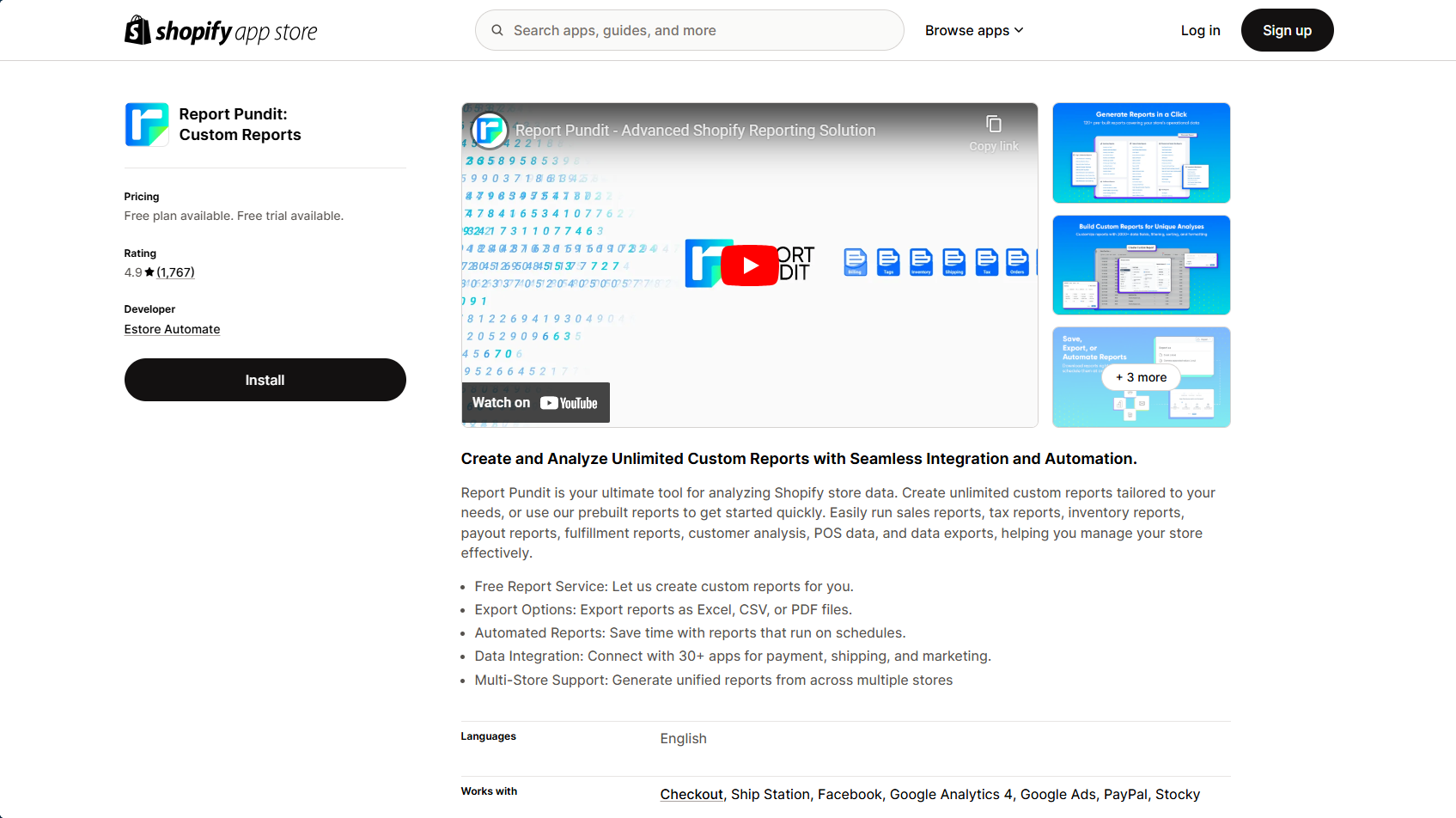
- Rating: 4.9/5 (1,767 reviews)
- Pricing: Starts at $9/month
- Best for: Custom reporting and data analysis.
- Why you should use this app: Report Pundit offers advanced reporting tools that allow you to analyze sales, customer behavior, and inventory performance. It’s essential for making informed business decisions and optimizing operations.
10.3. BeProfit – Profit Analytics Dashboard
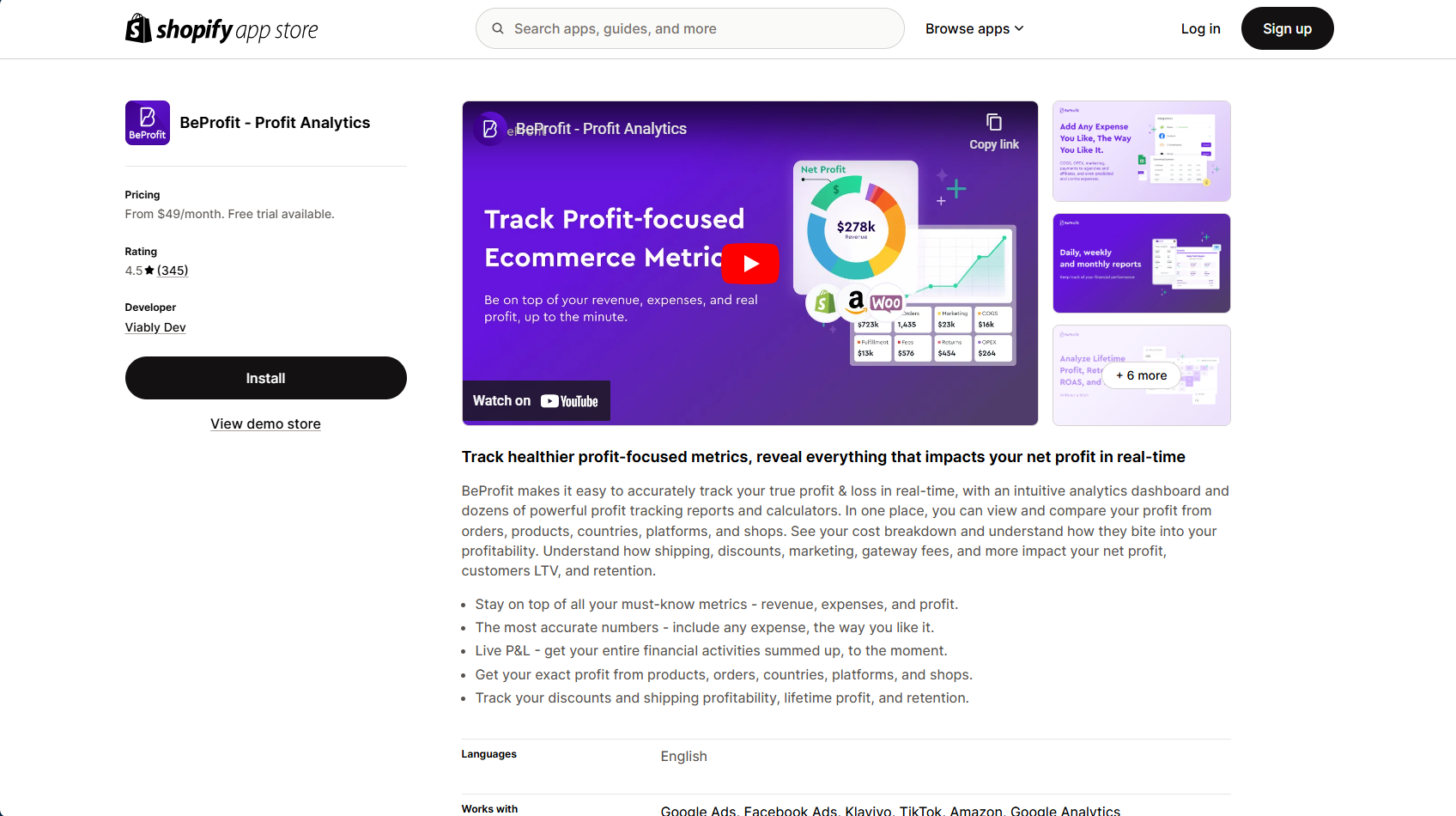
- Rating: 4.5/5 (345 reviews)
- Pricing: Free plan available; paid plans start at $25/month
- Best for: Tracking profits and expenses in real time.
- Why you should use this app: BeProfit provides a comprehensive profit and expense tracking dashboard, helping you understand your financial performance and optimize profitability. It’s perfect for managing costs and maximizing revenue.
11. Interesting New Apps
11.1. Checkout Blocks
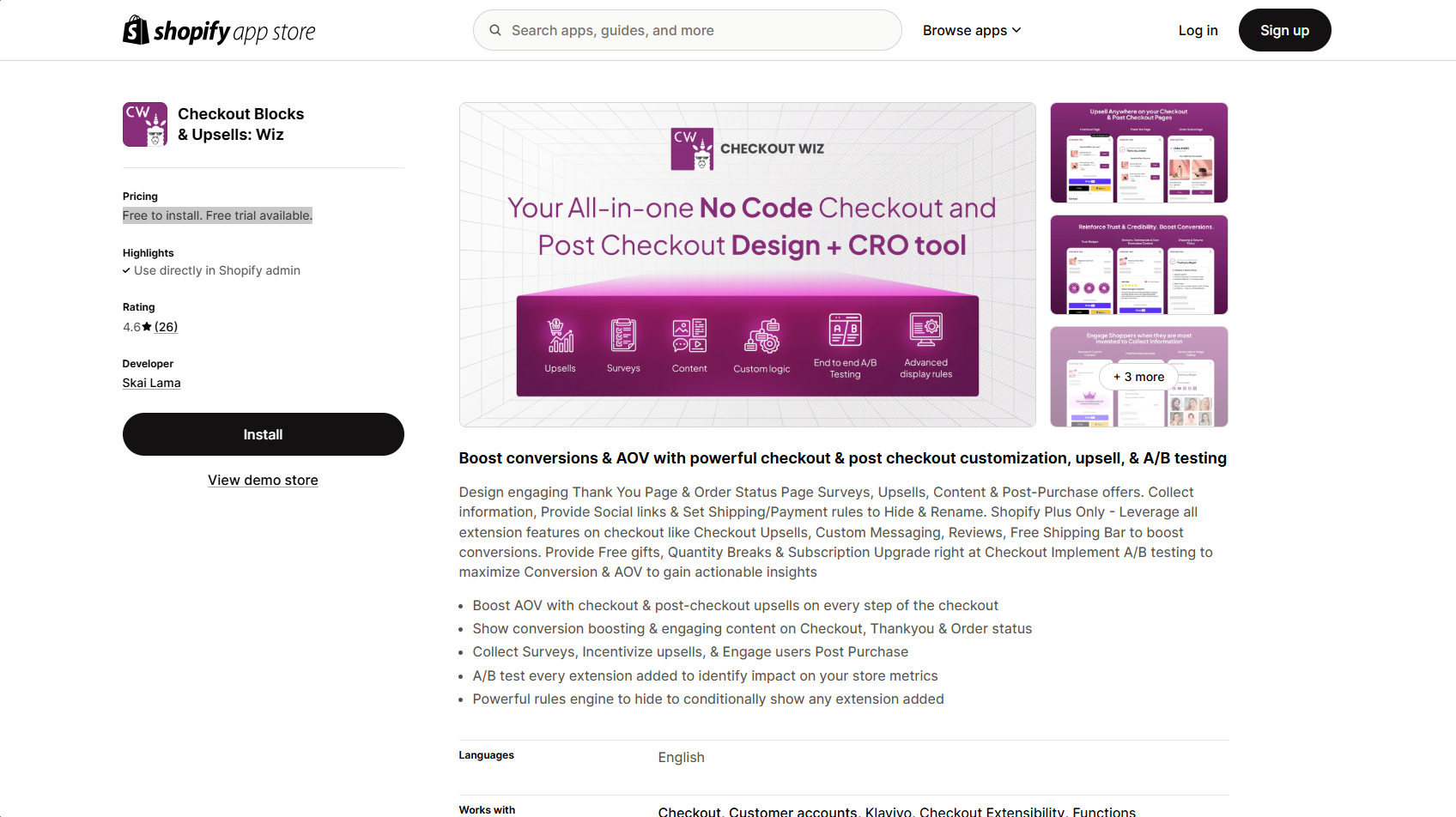
- Rating: 4.6/5 (26 reviews)
- Pricing: Free to install. Free trial available.
- Best for: Customizing your Shopify checkout experience.
- Why you should use this app: Checkout Blocks allows you to personalize the checkout process with custom messages, upsells, and design tweaks. It’s perfect for increasing conversions and creating a seamless customer experience.
11.2. ReConvert Upsell & Cross Sell
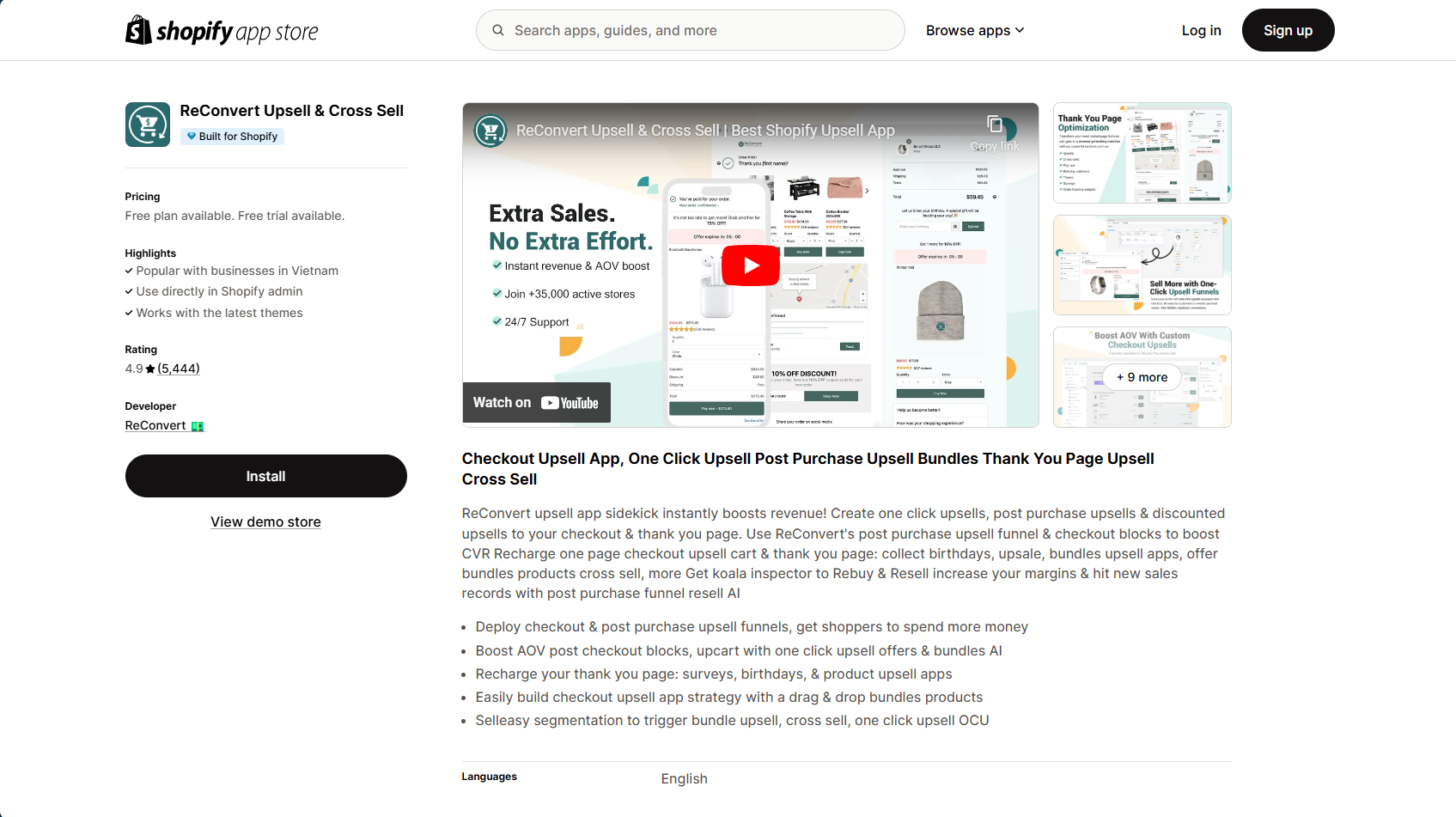
- Rating: 4.9/5 (5,444 reviews)
- Pricing: Free plan available; paid plans start at $7.99/month
- Best for: Optimizing the post-purchase experience.
- Why you should use this app: ReConvert helps maximize revenue by offering upsell and cross-sell opportunities after purchase. It’s easy to set up and enhances the post-purchase experience, encouraging repeat business.
11.3. Fera Product Reviews App
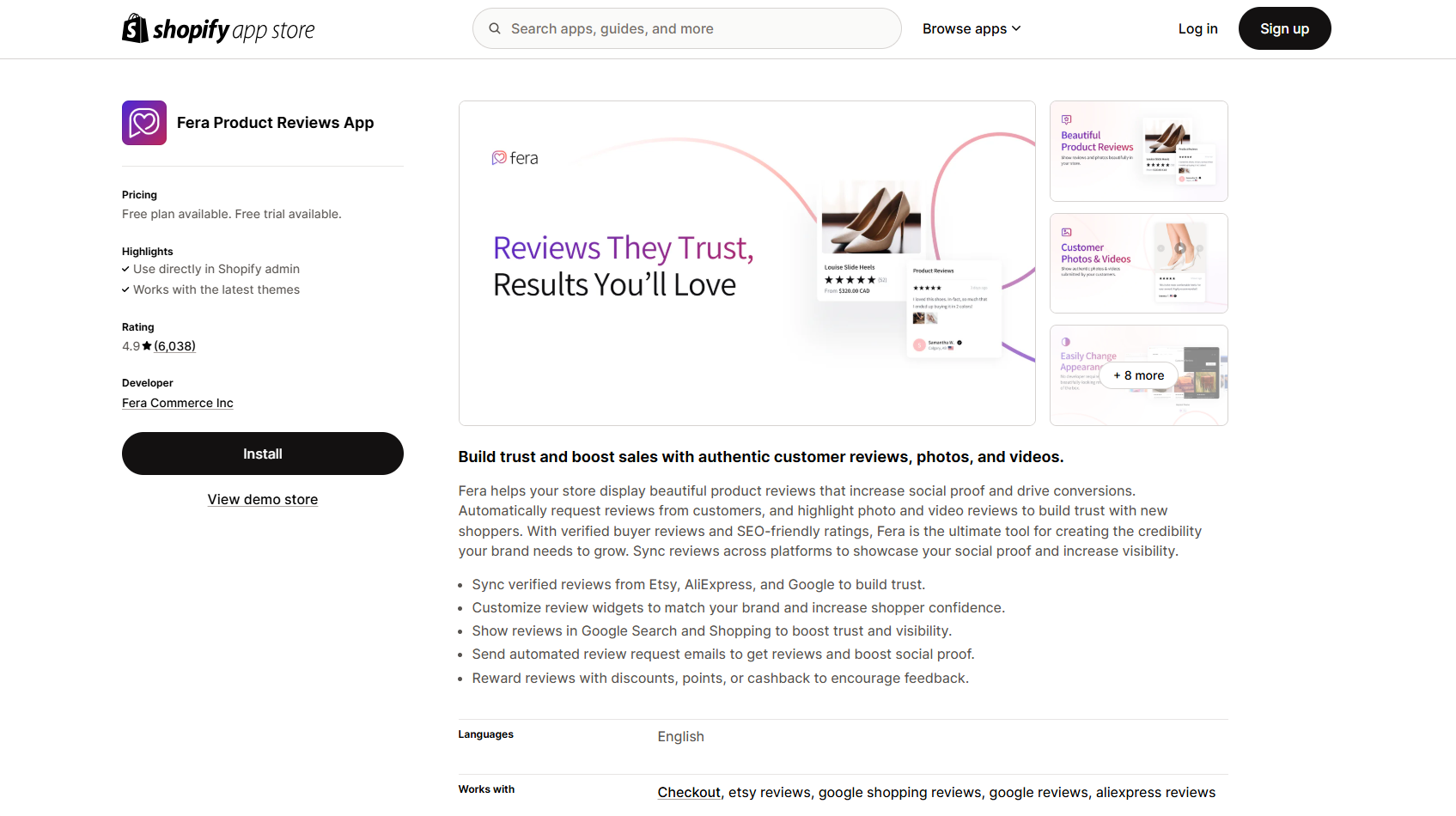
- Rating: 4.9/5 (6,038 reviews)
- Pricing: Free plan available; paid plans start at $9/month
- Best for: Collecting and displaying product reviews with ease.
- Why you should use this app: Fera makes it simple to collect, manage, and display product reviews, boosting your store’s credibility and encouraging more purchases. It’s perfect for building trust with new customers.
Conclusion
It’s a list of the top 30+ Shopify apps that have been updated yet and that equip you with solutions to address every aspect of your business, from SEO and marketing to order fulfillment and customer engagement. Whether you’re a seasoned Shopify pro or just starting out, these powerful apps can help you streamline operations, optimize conversions, and watch your sales soar.
